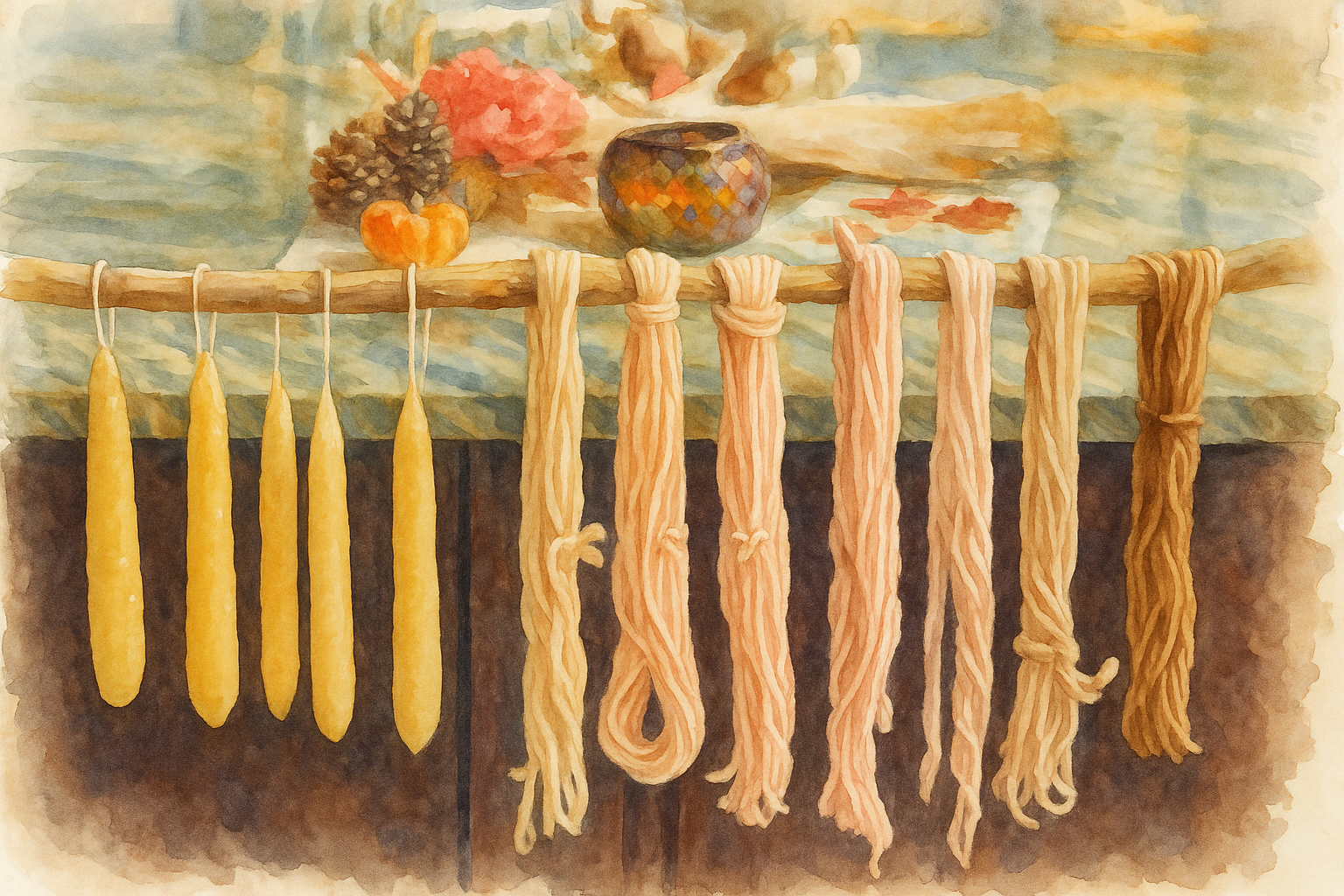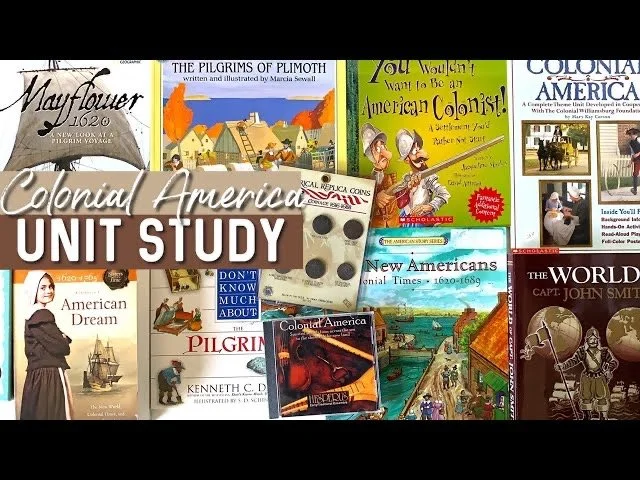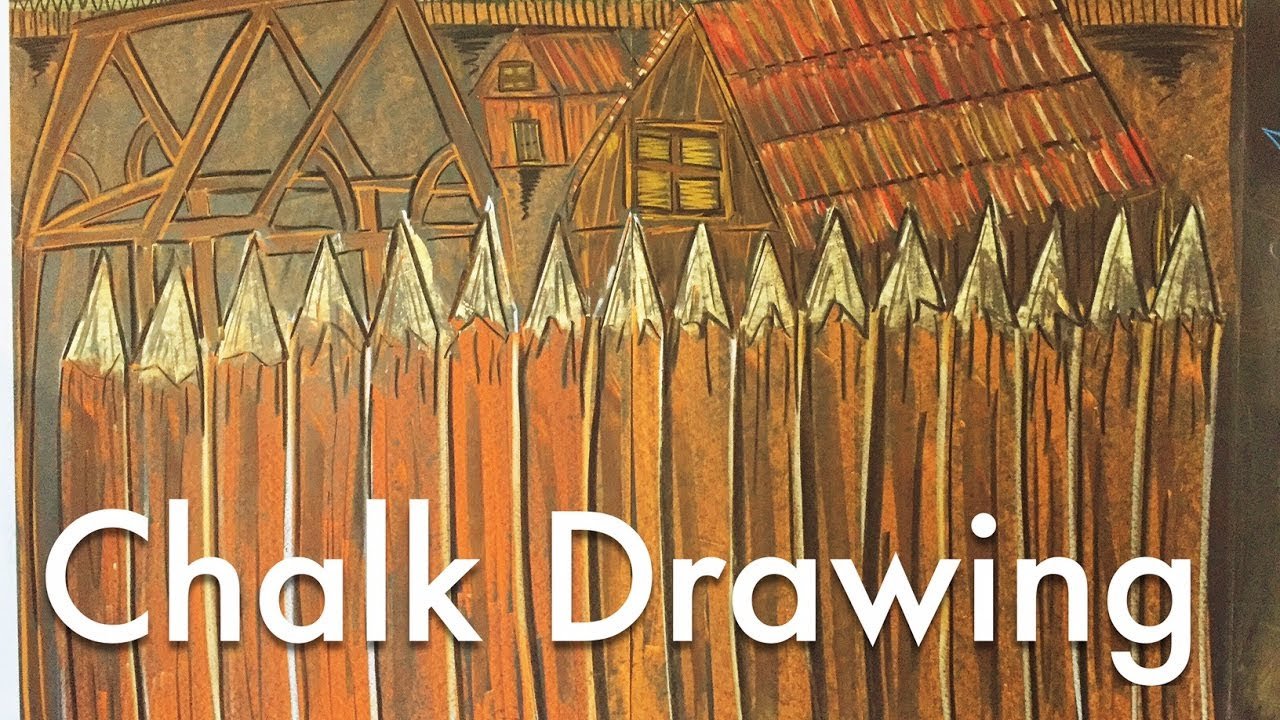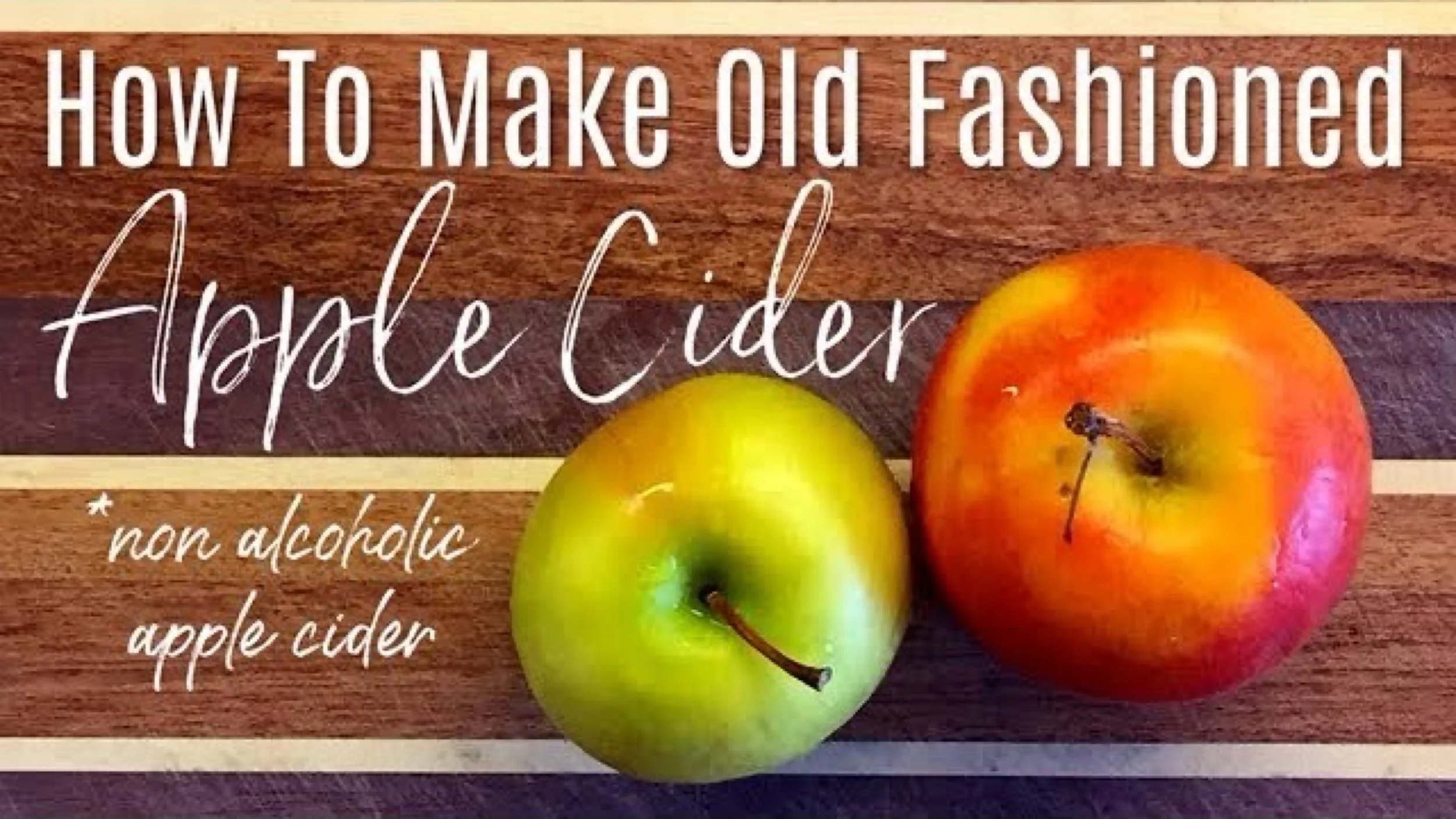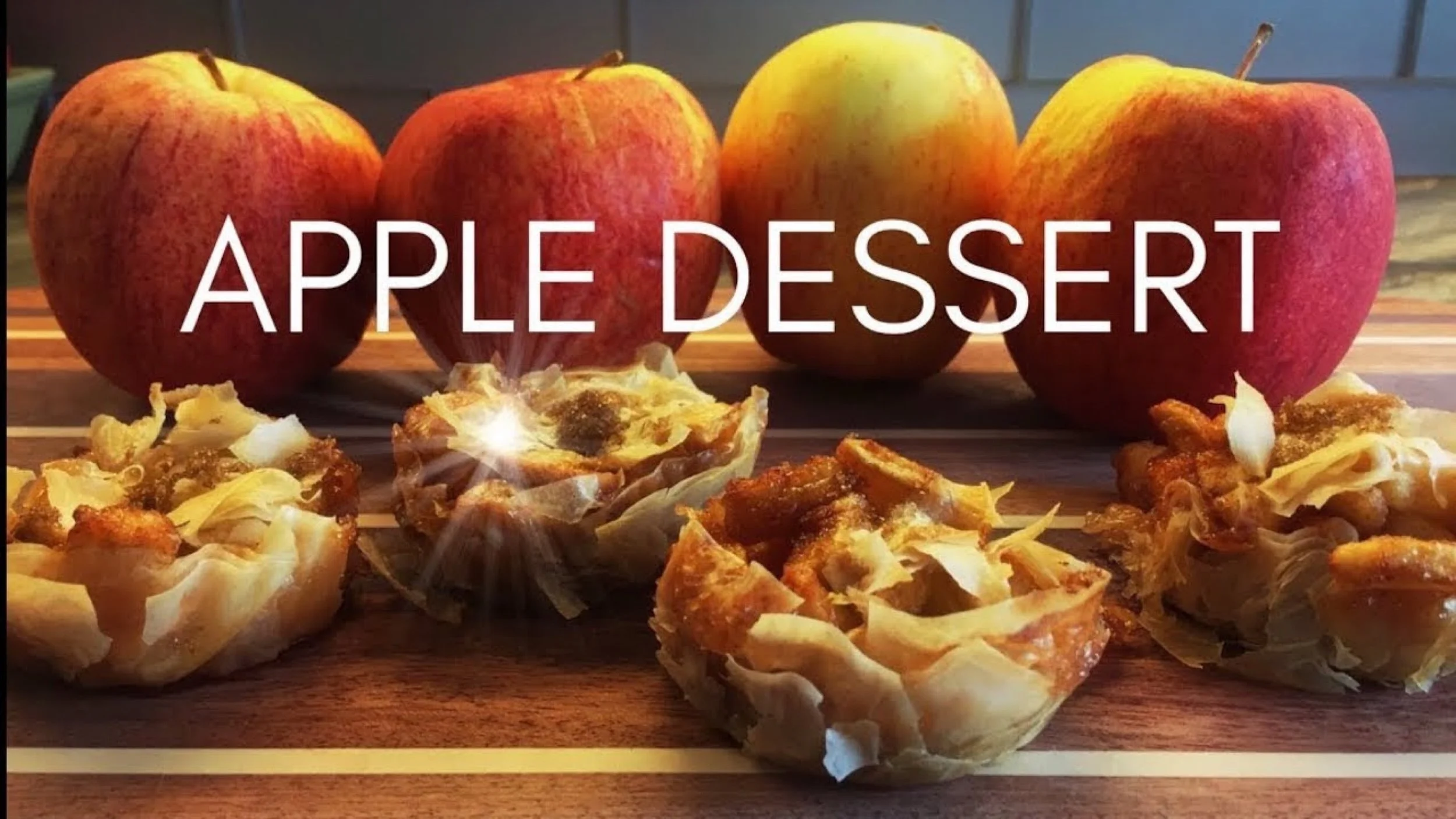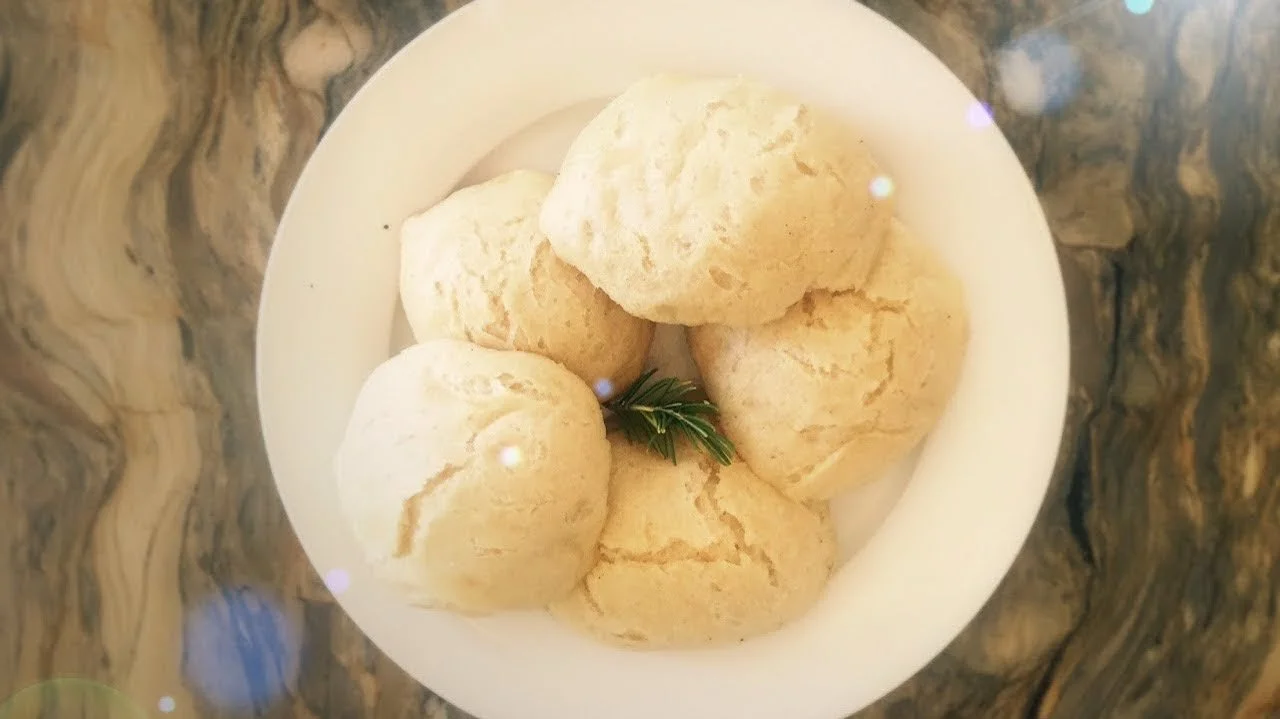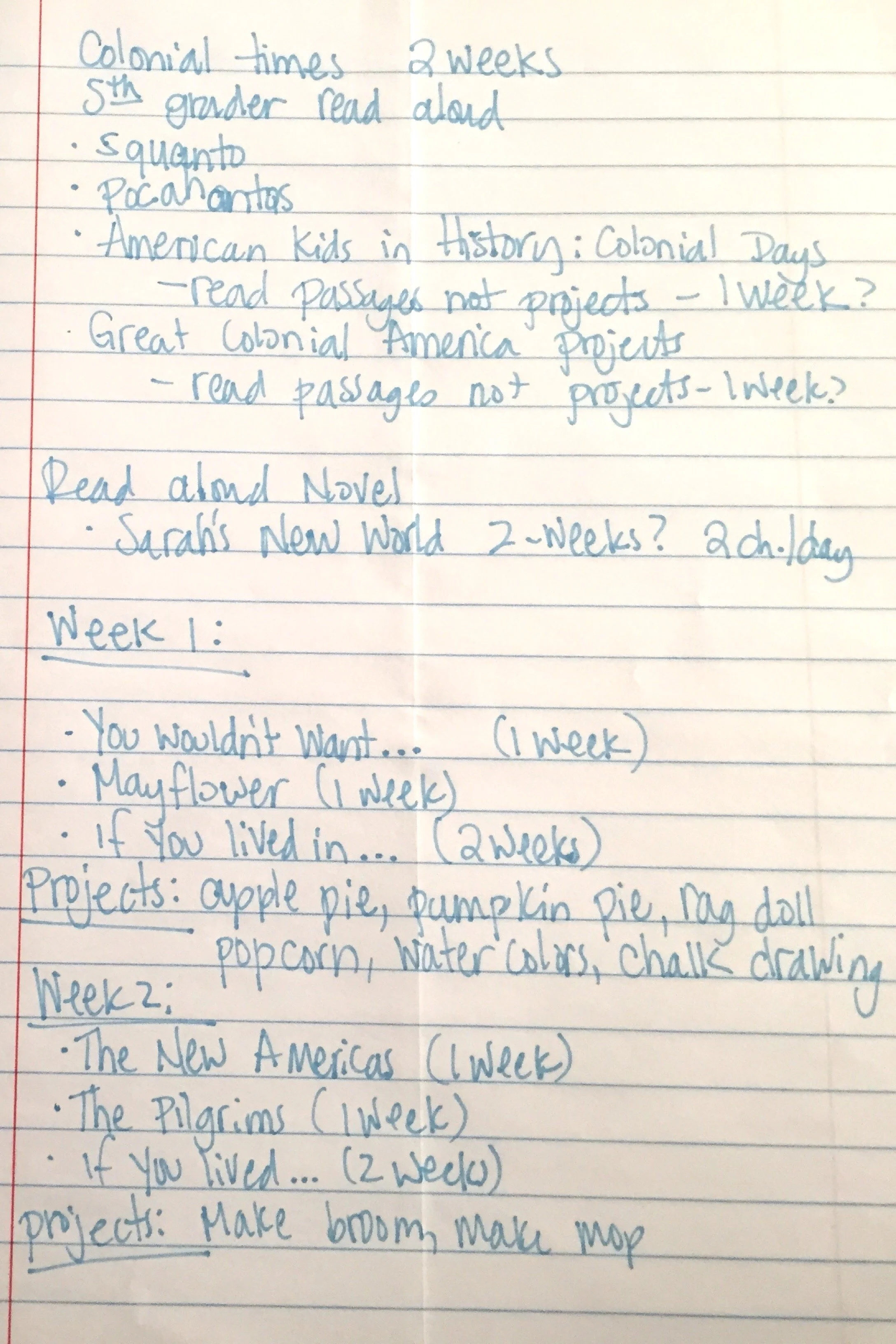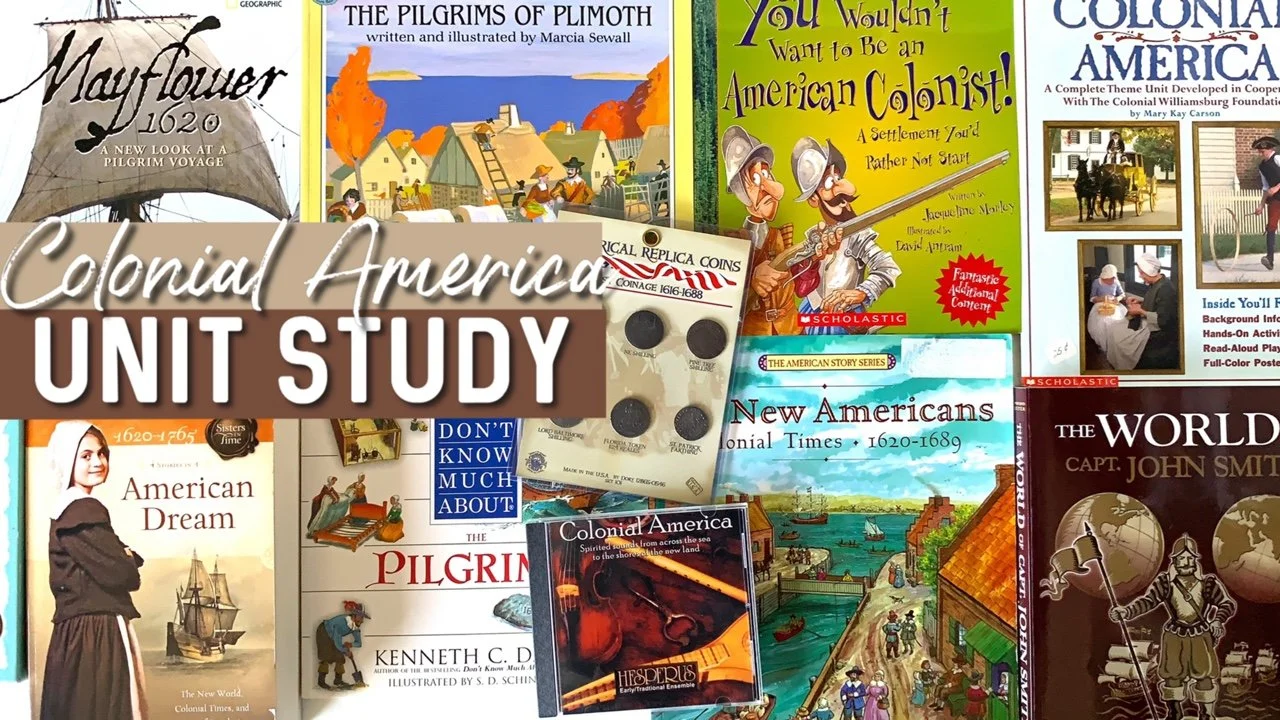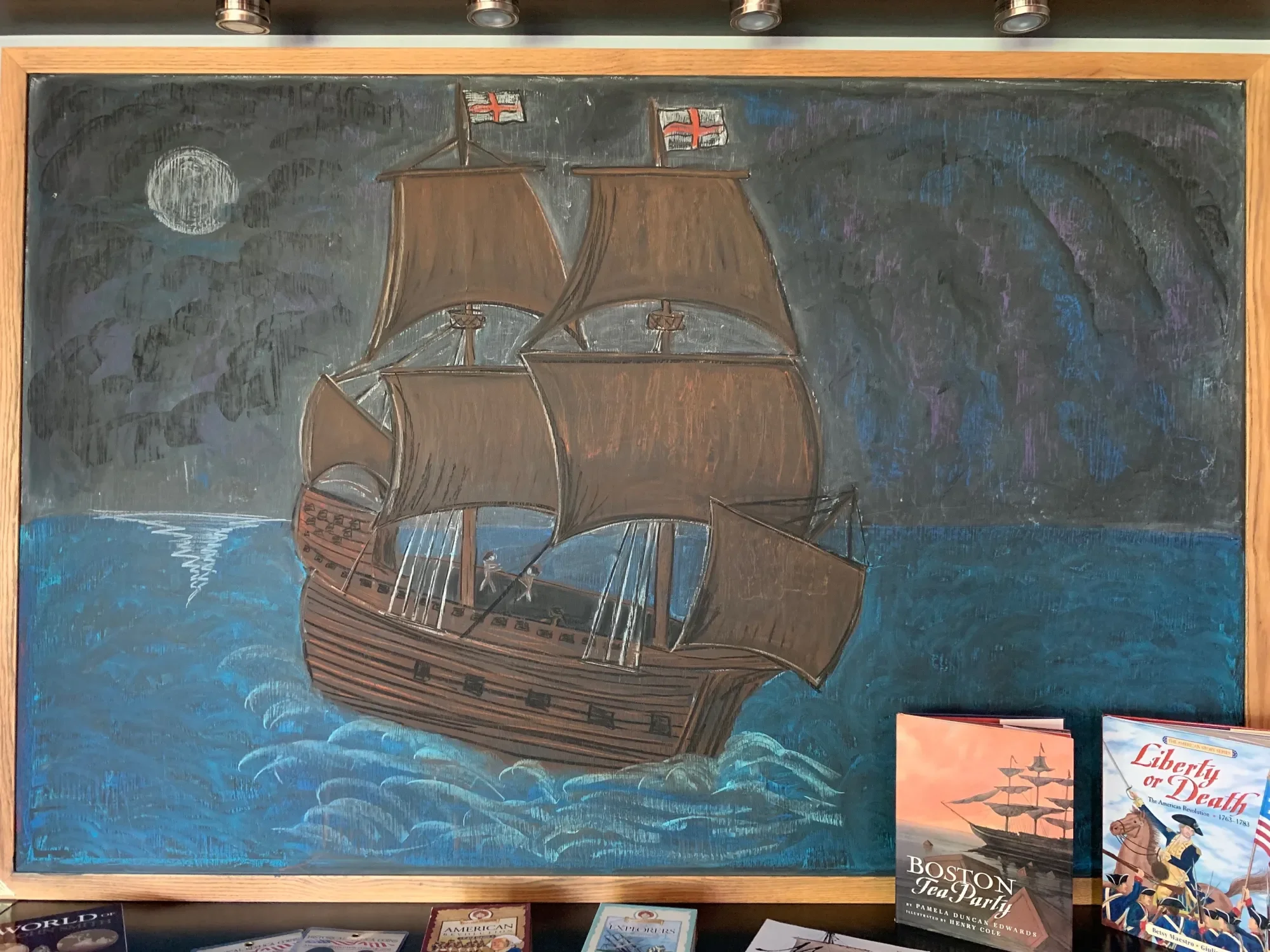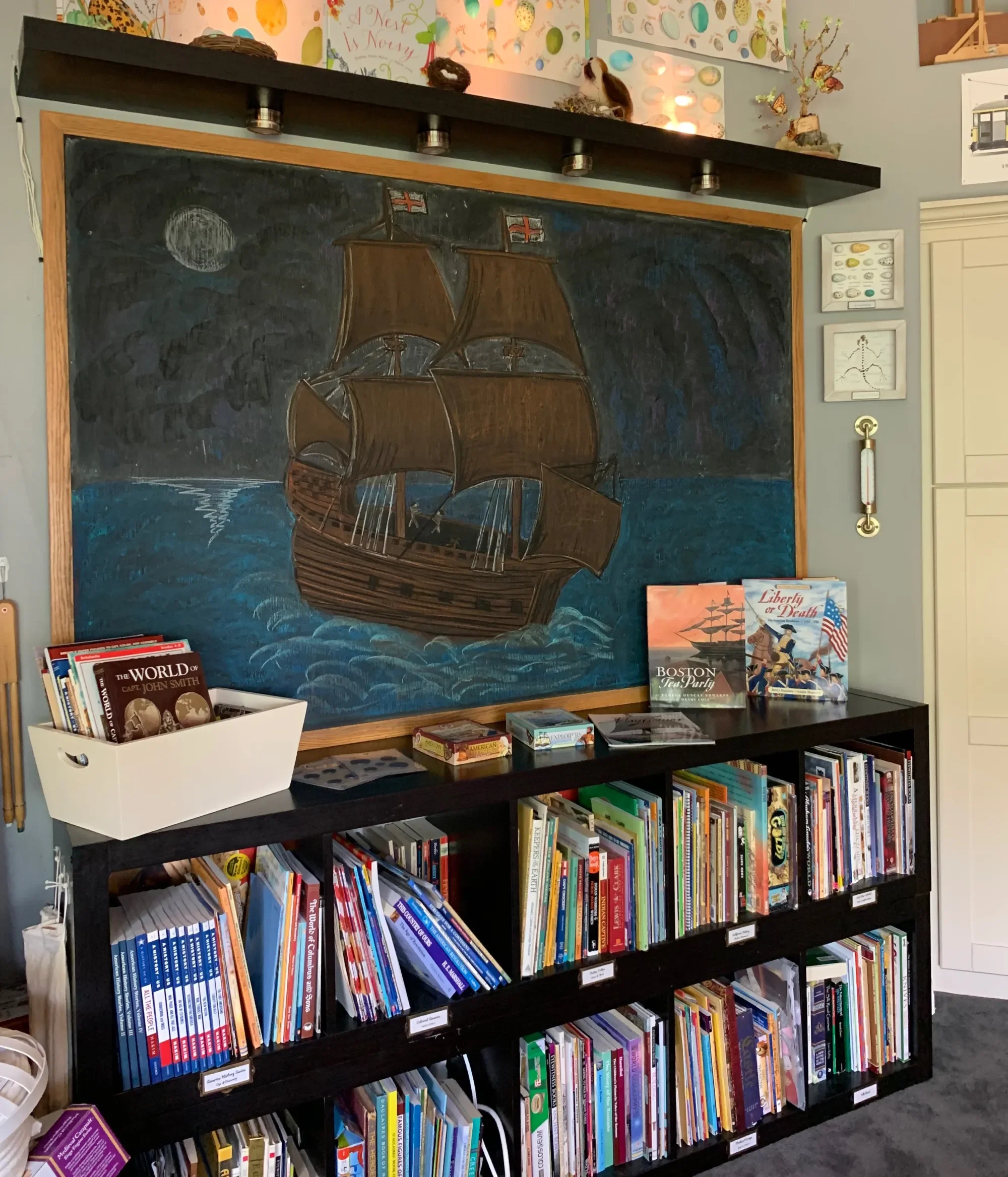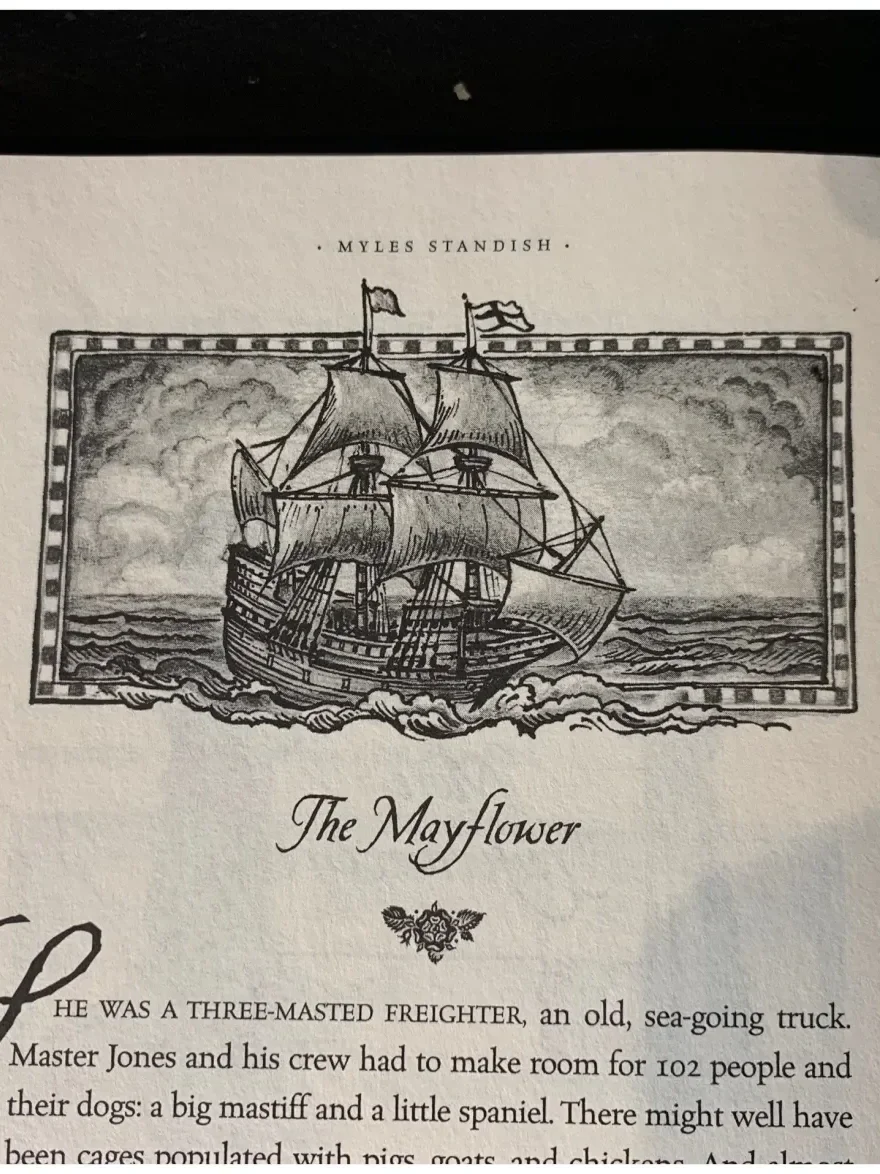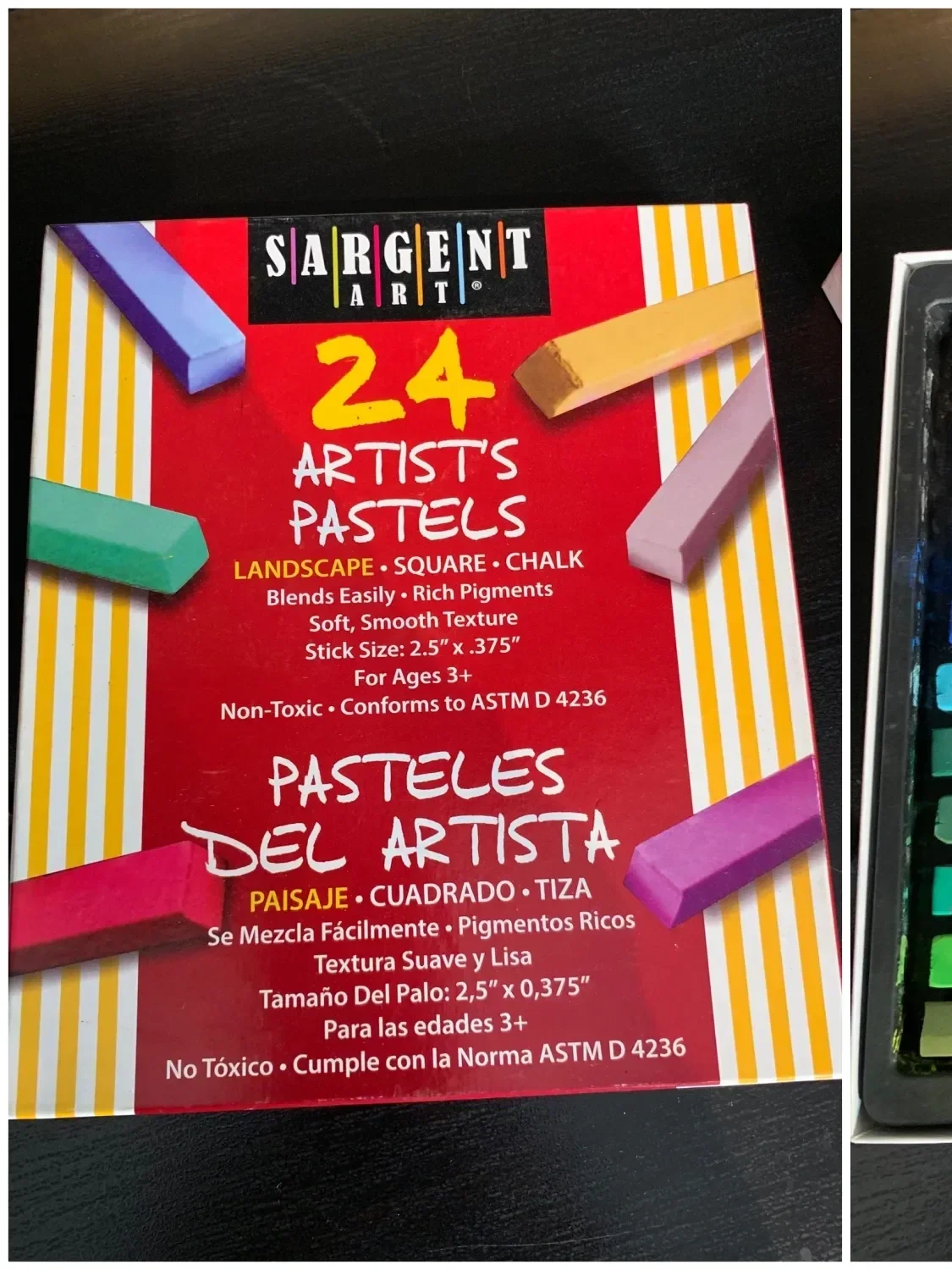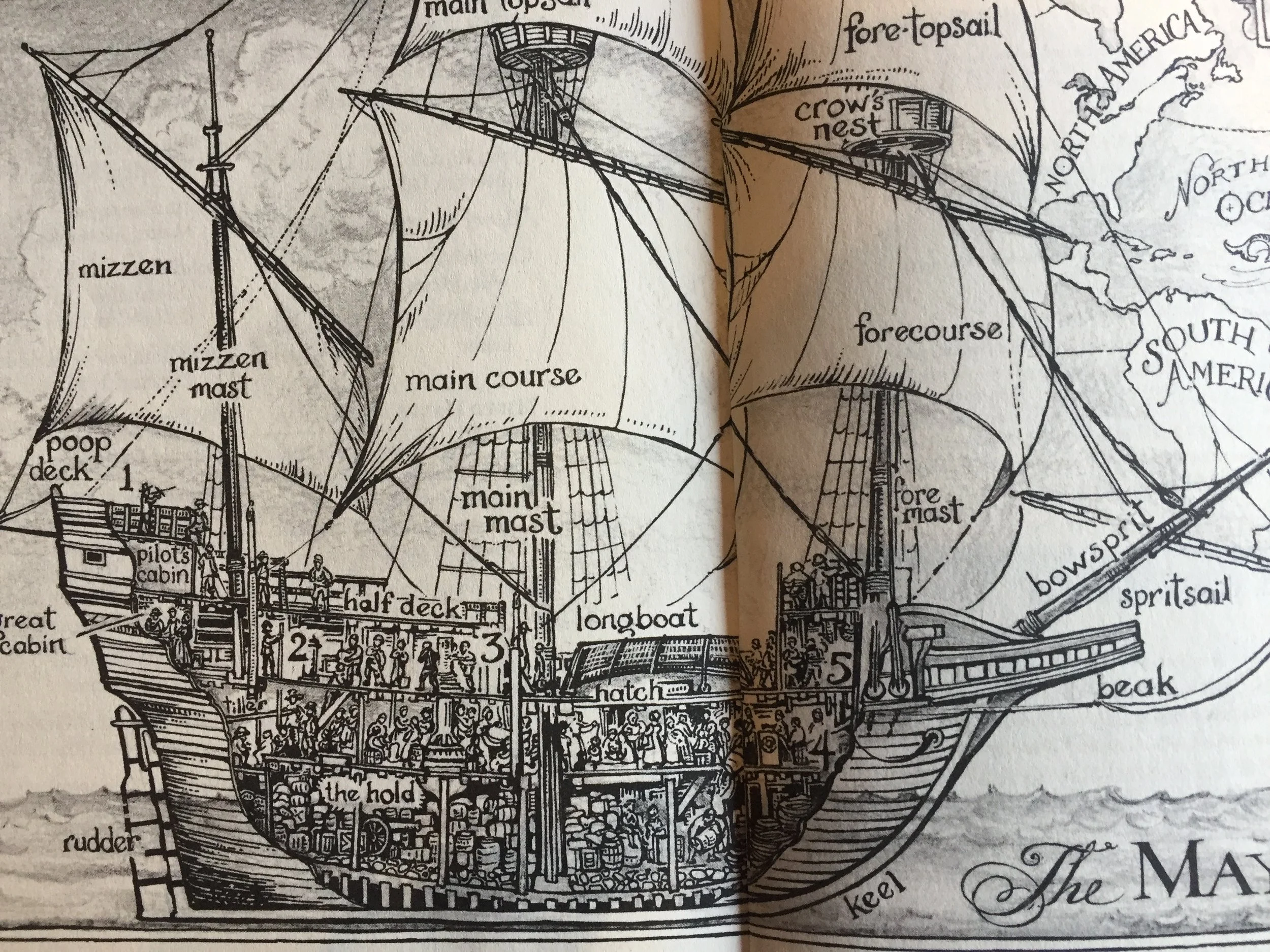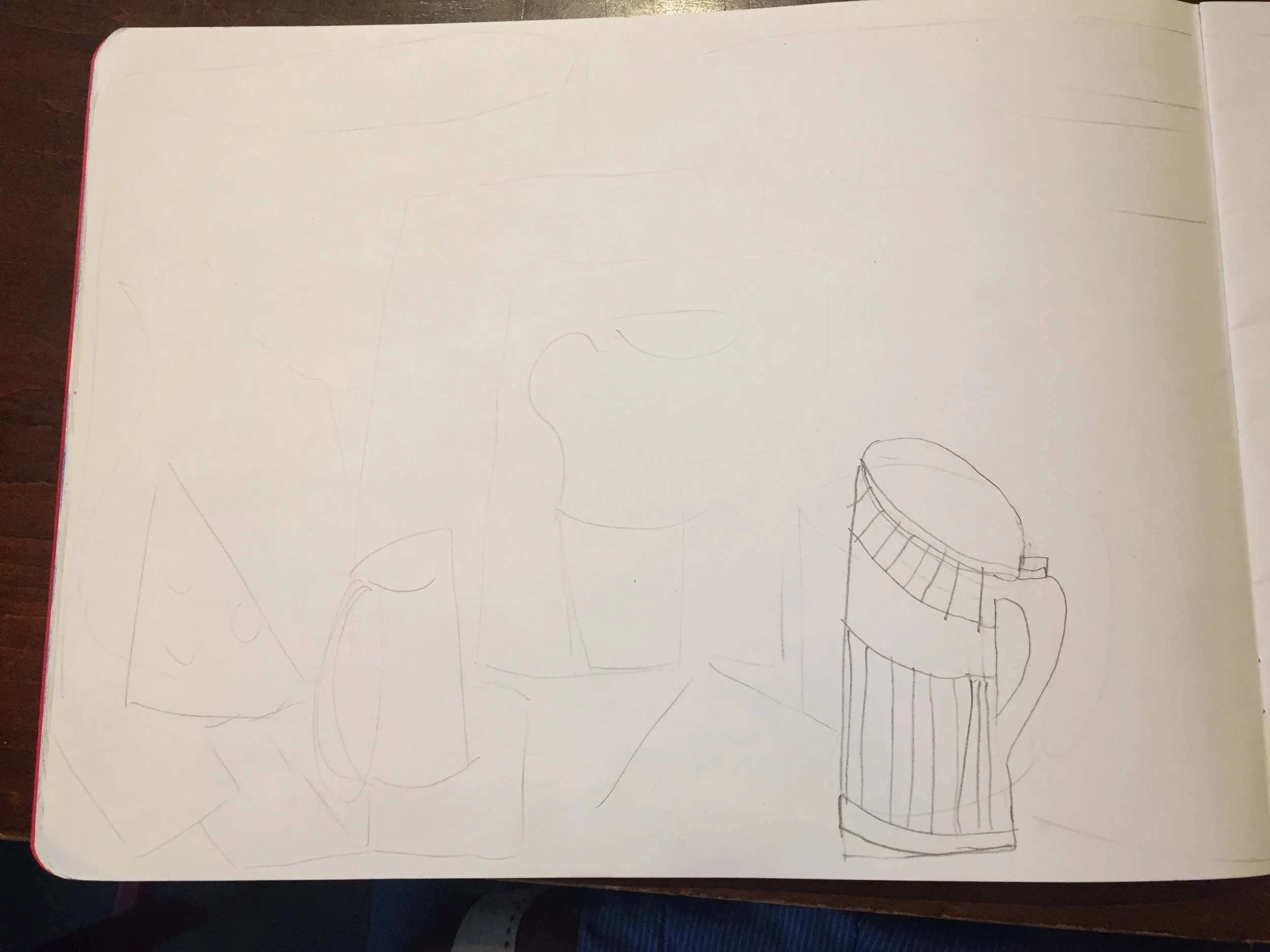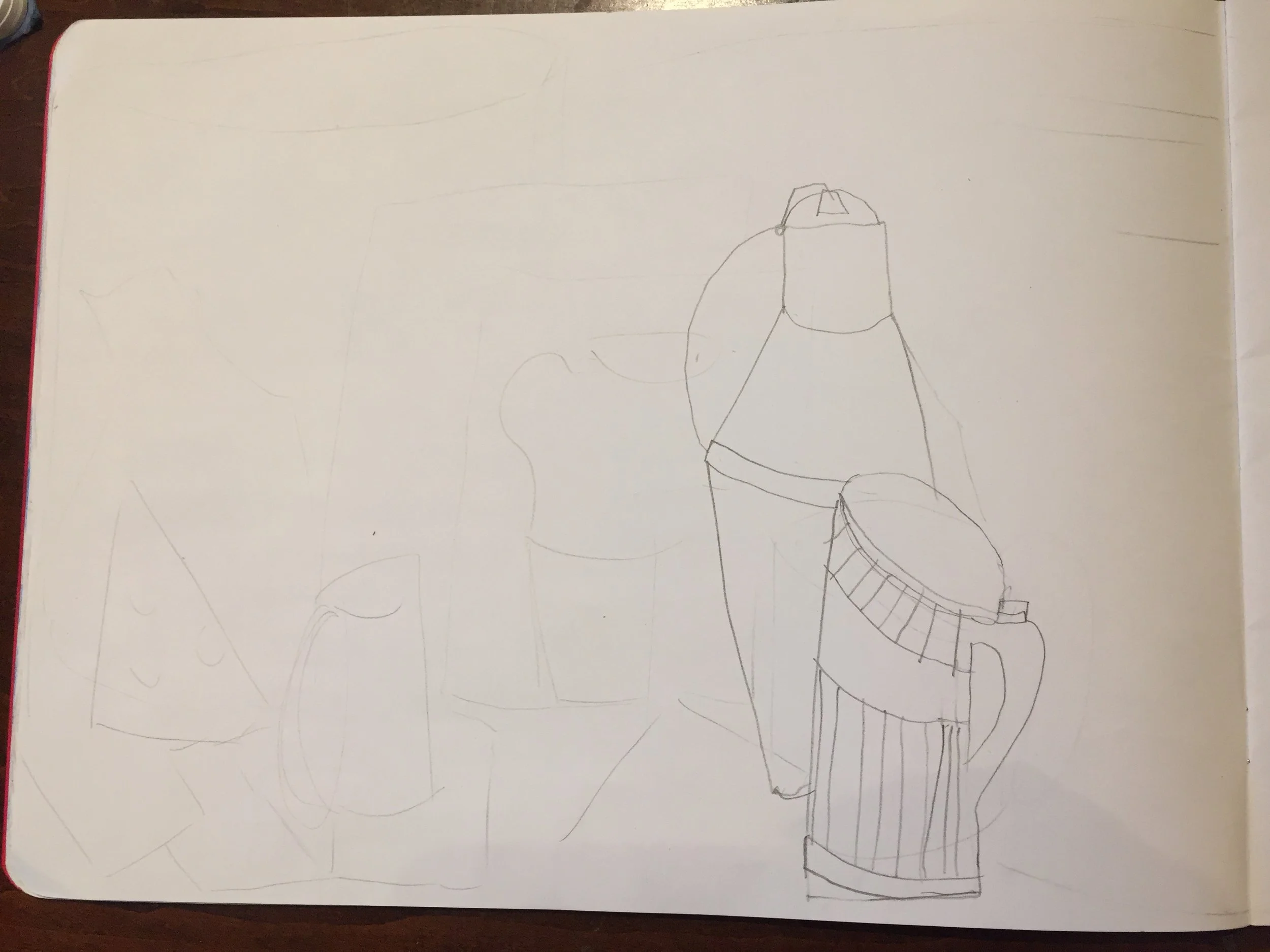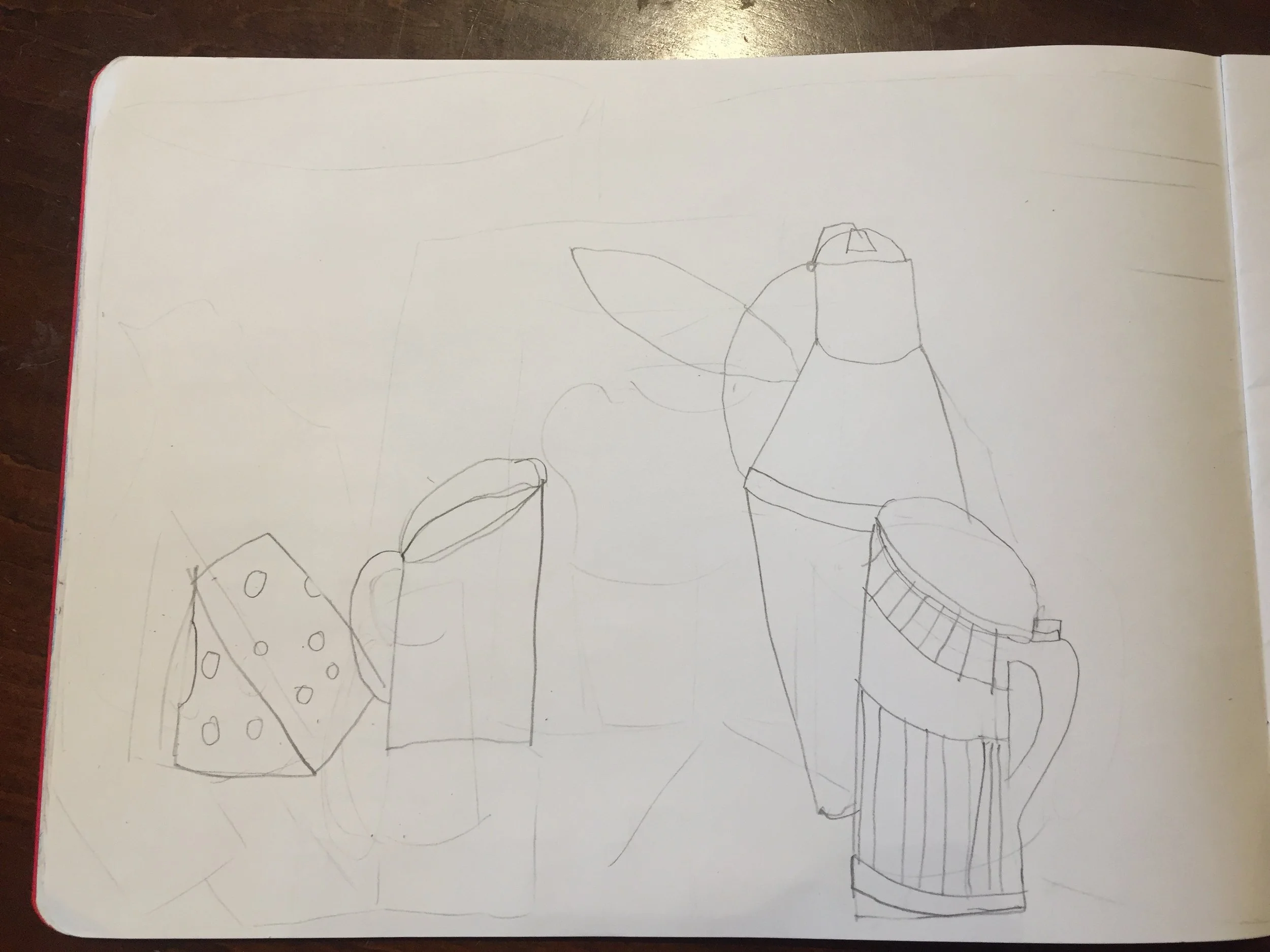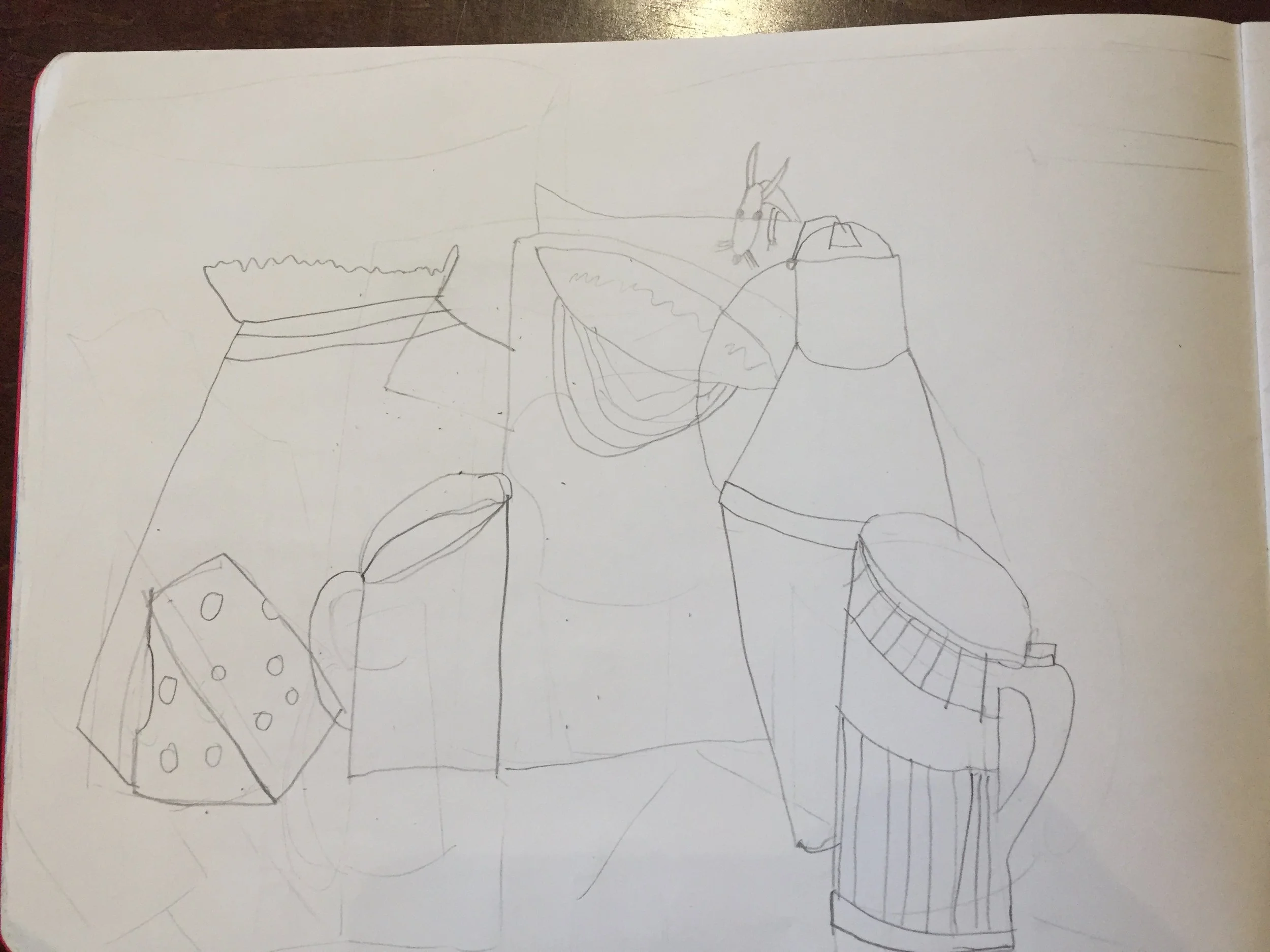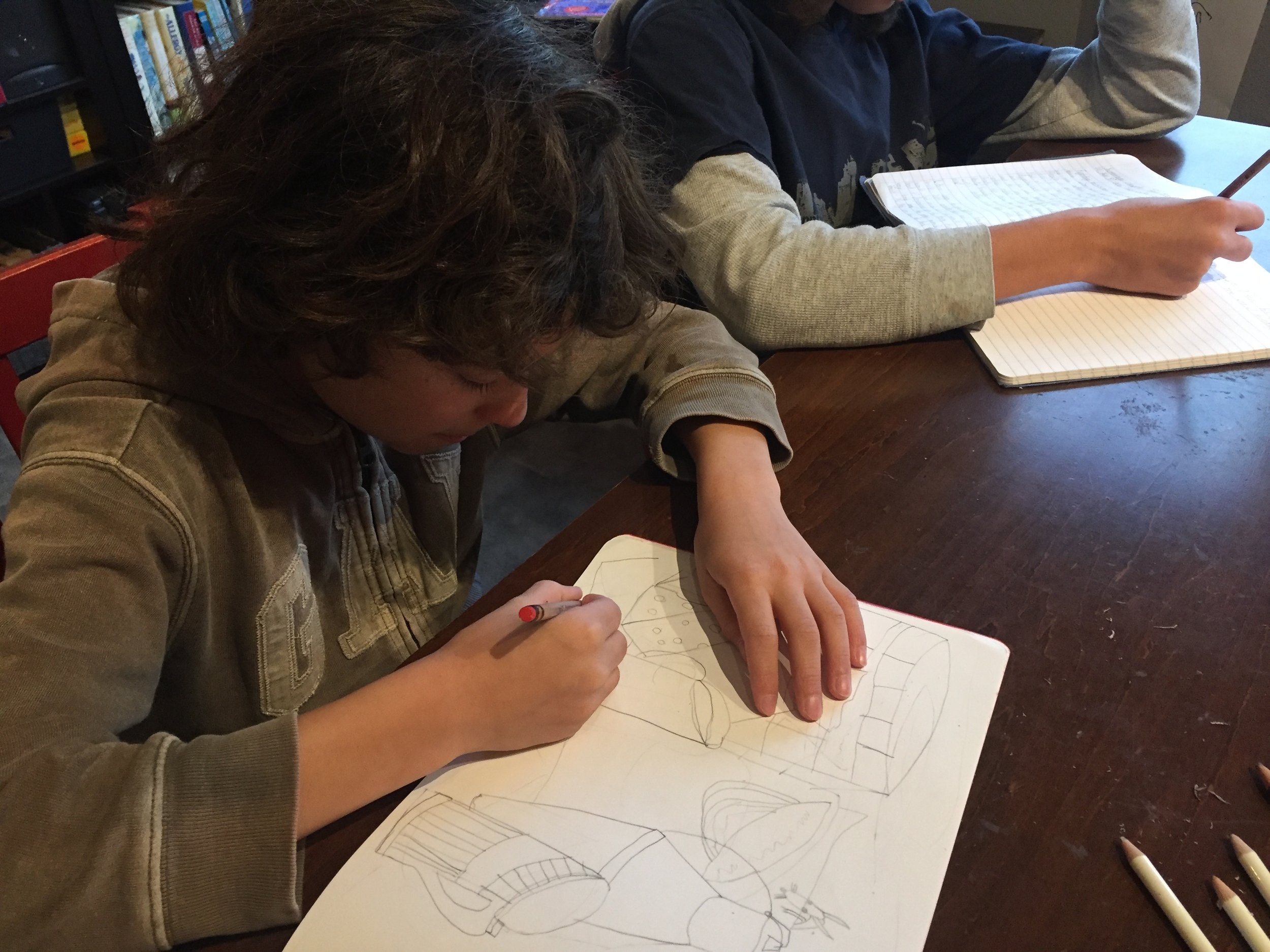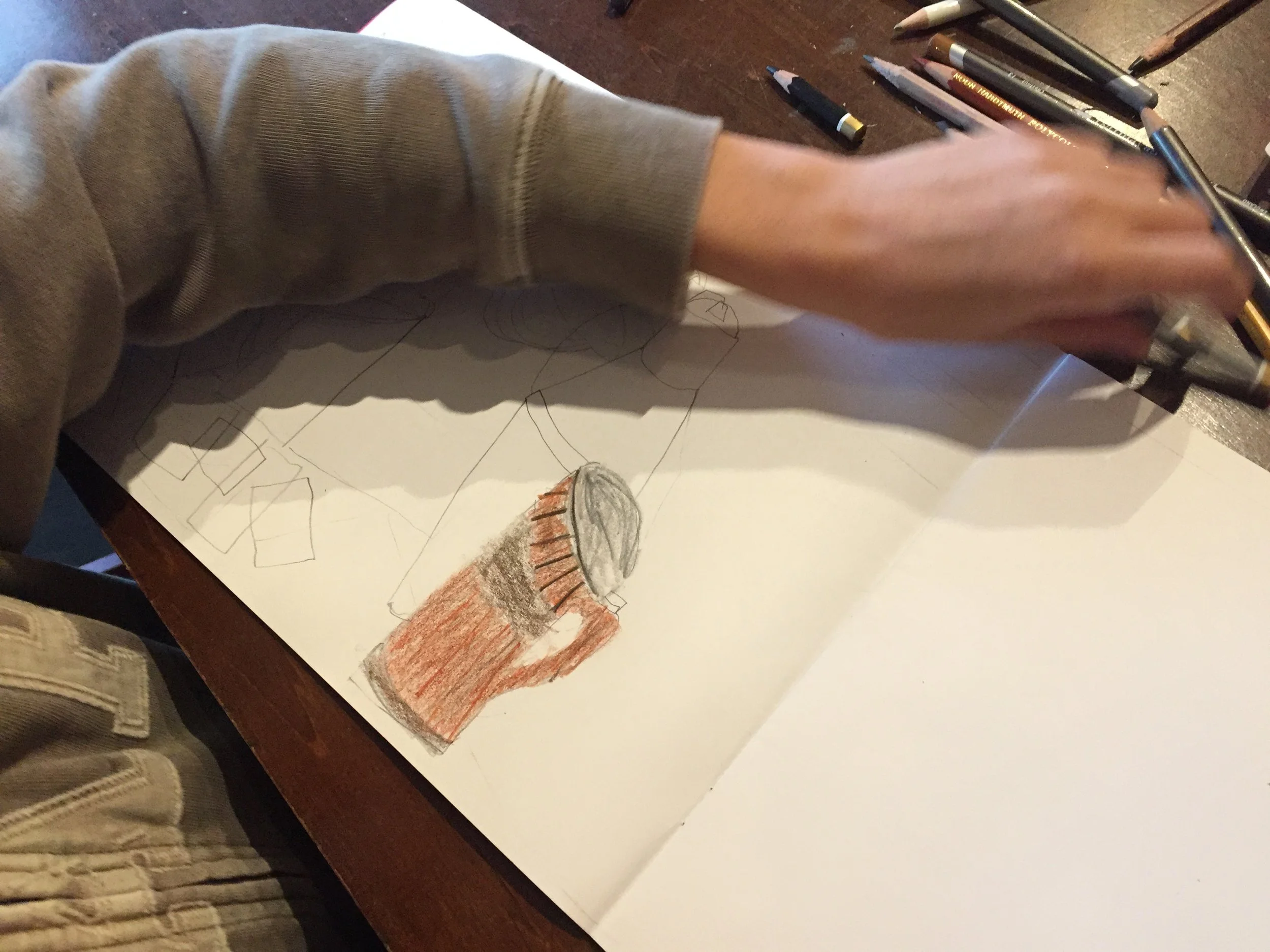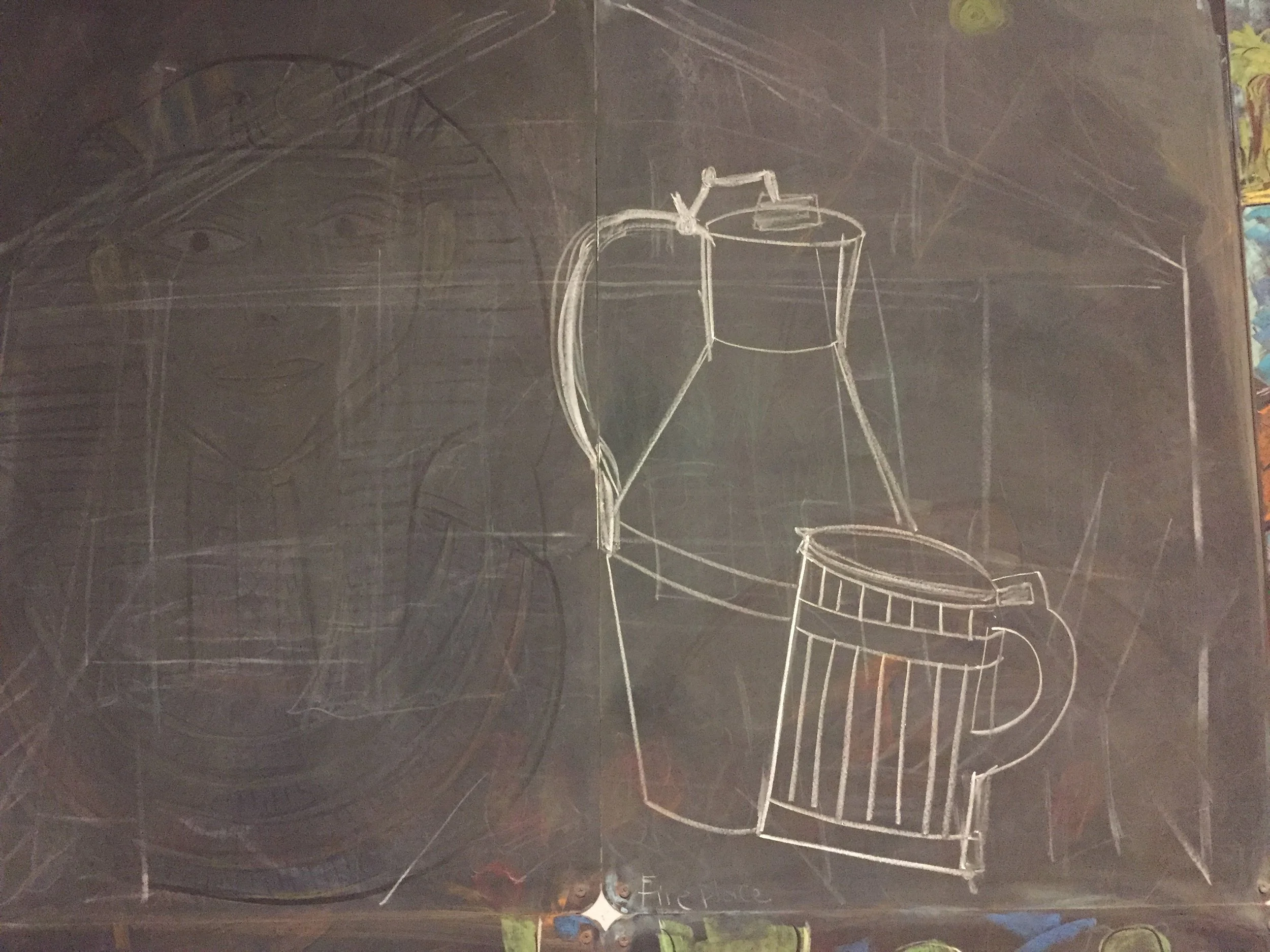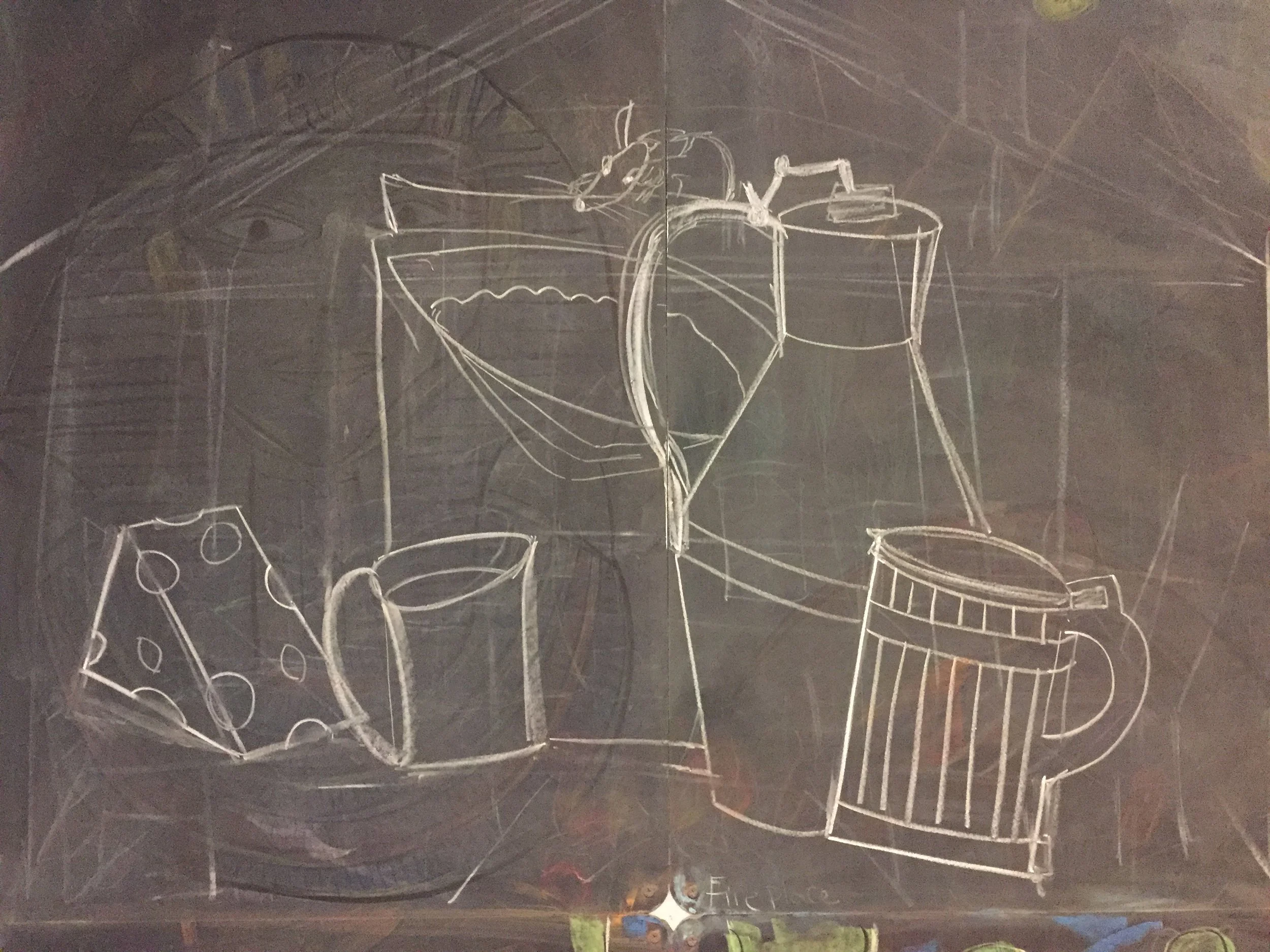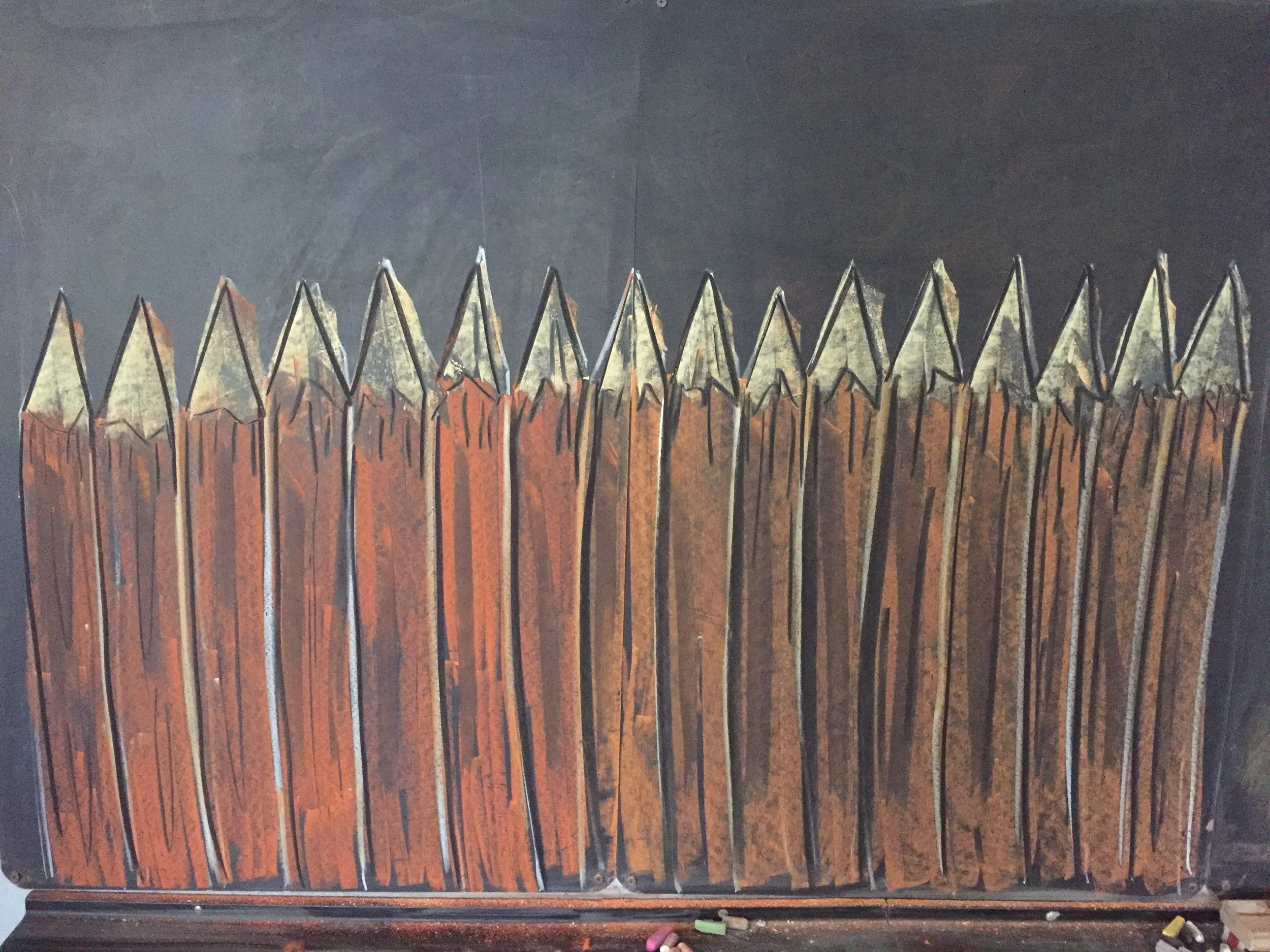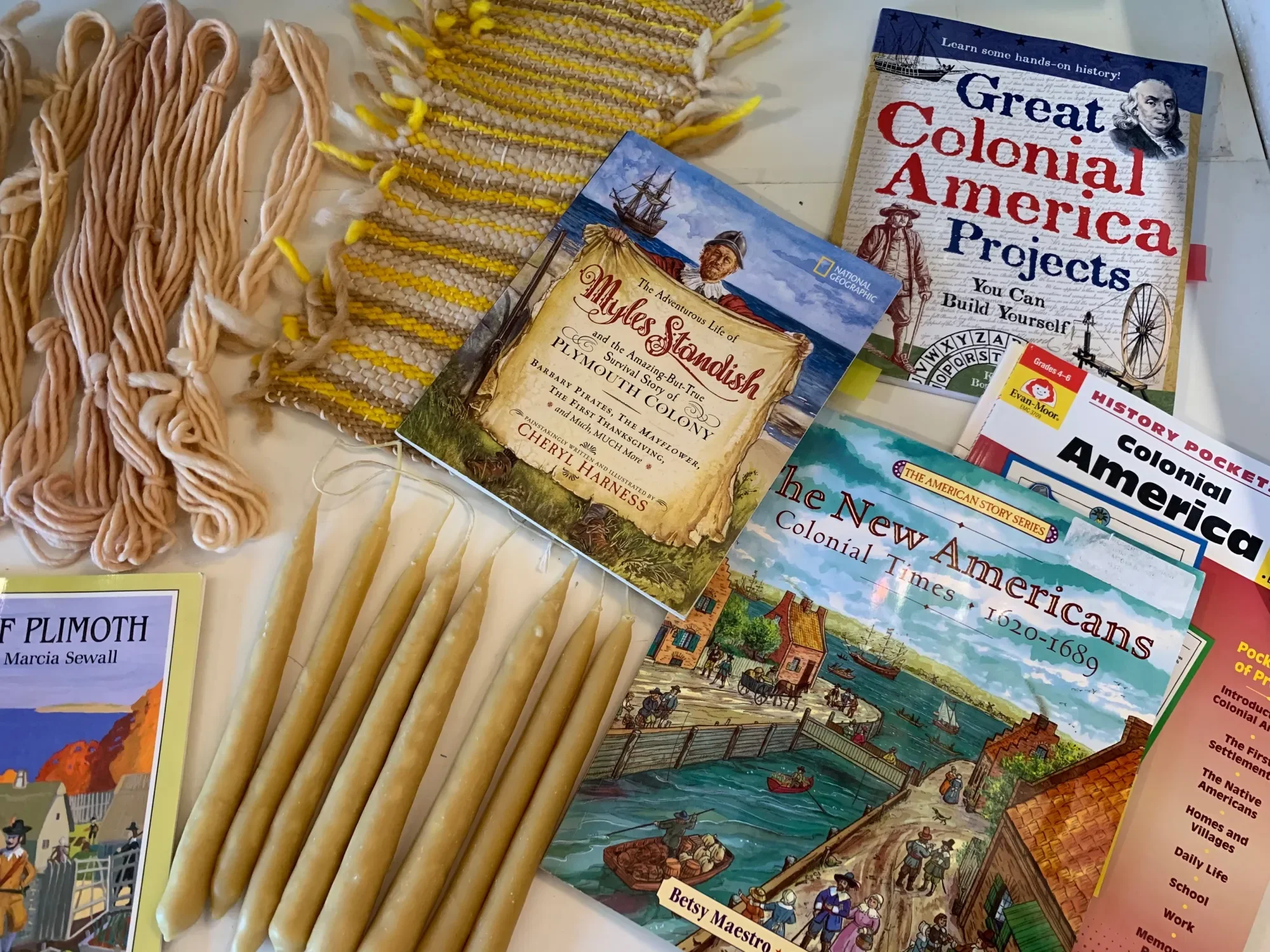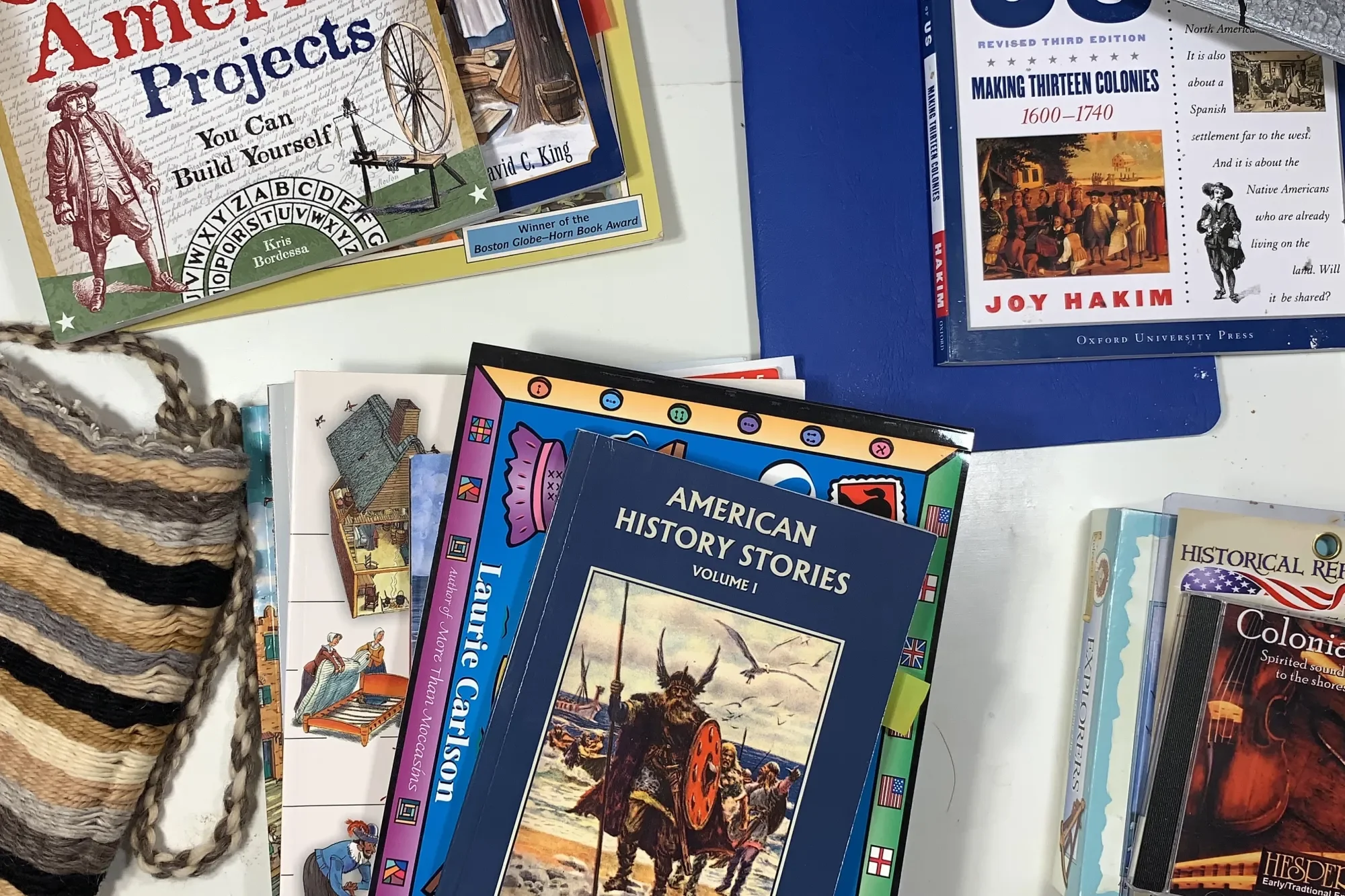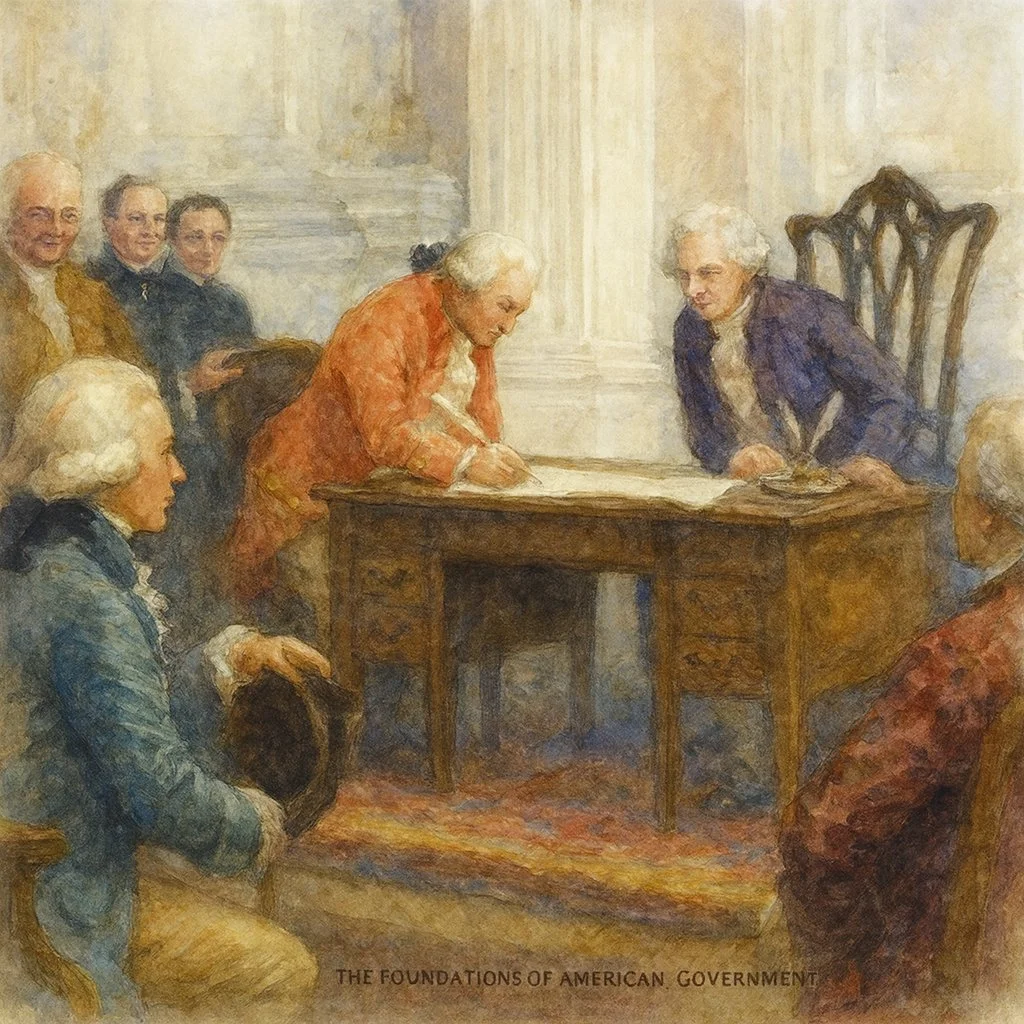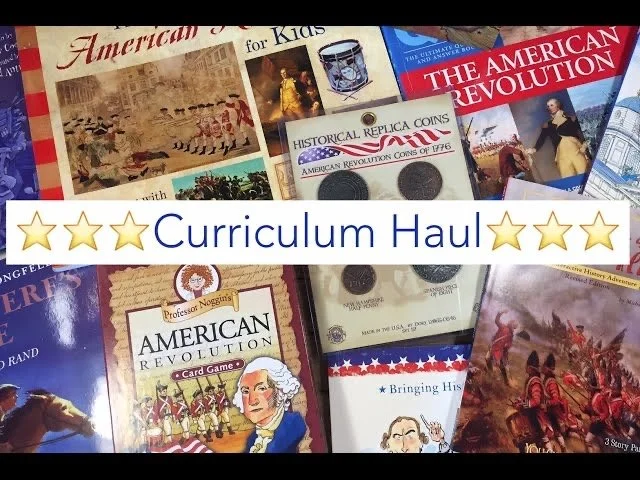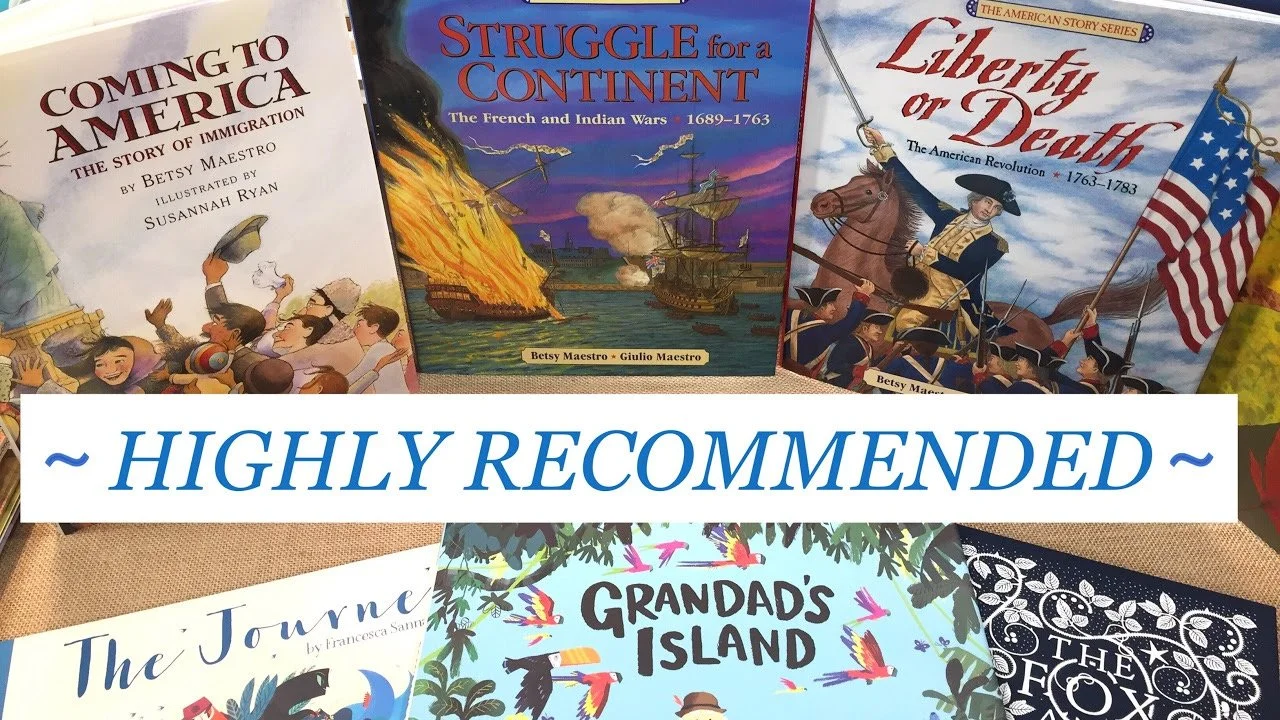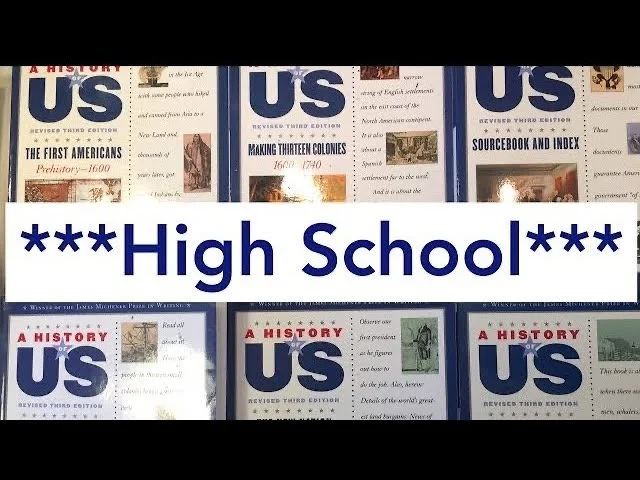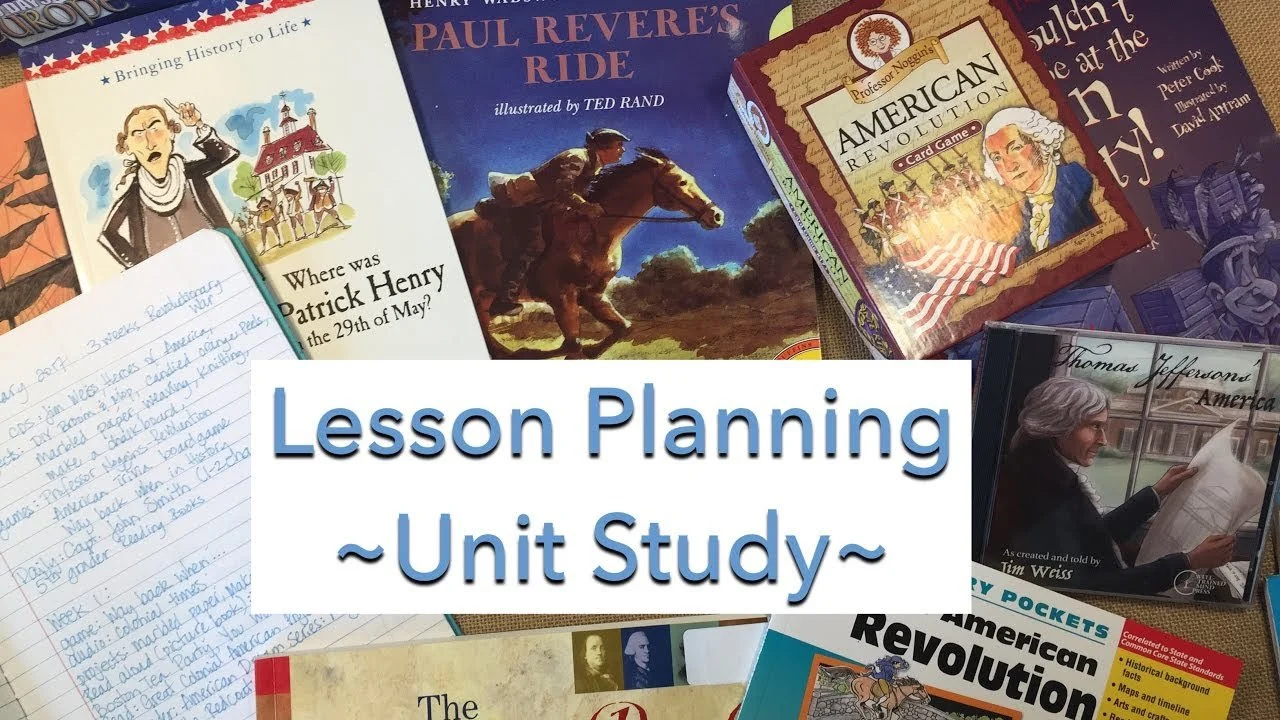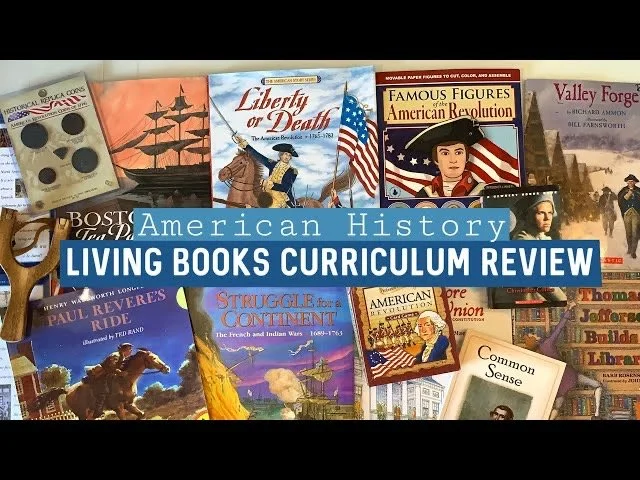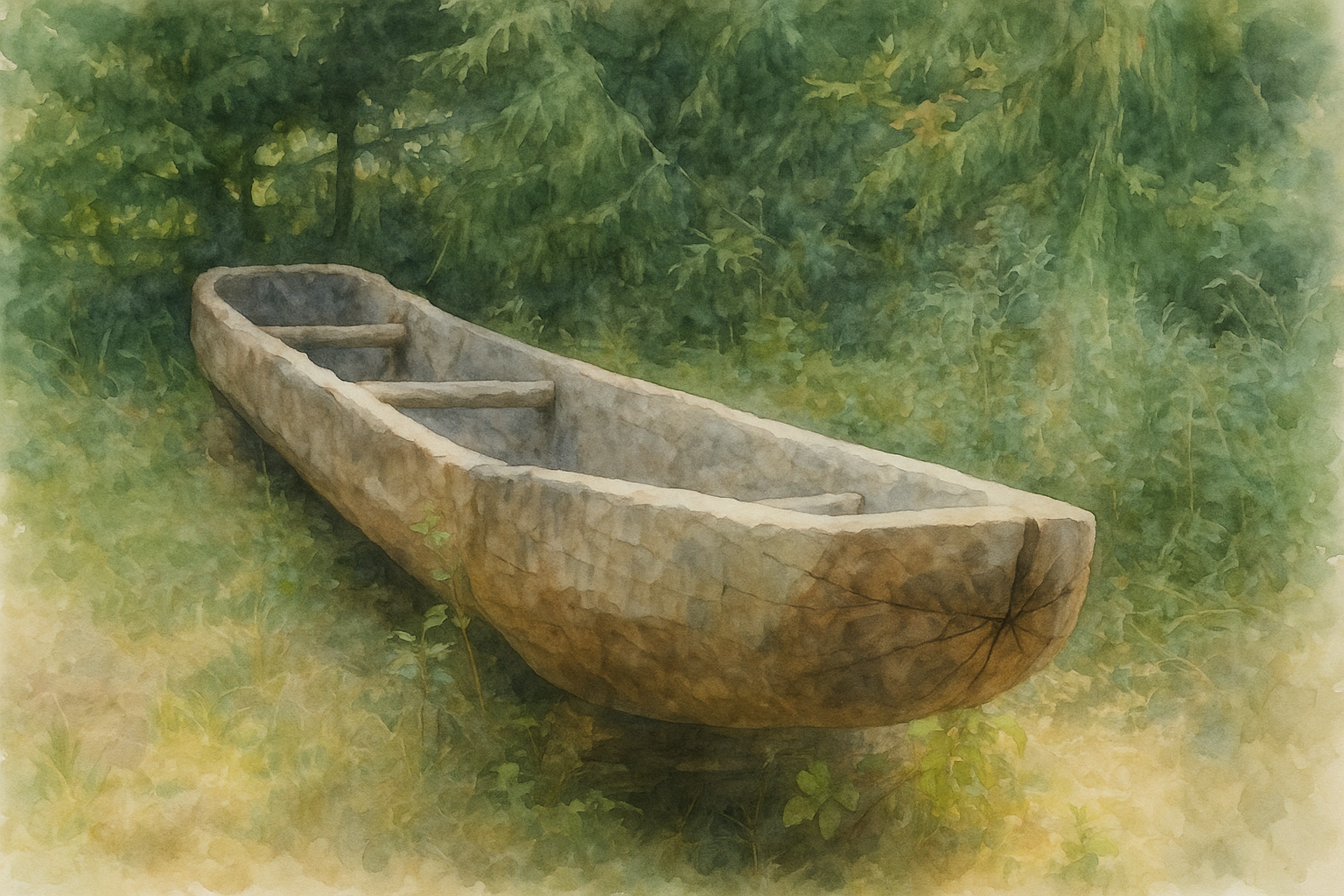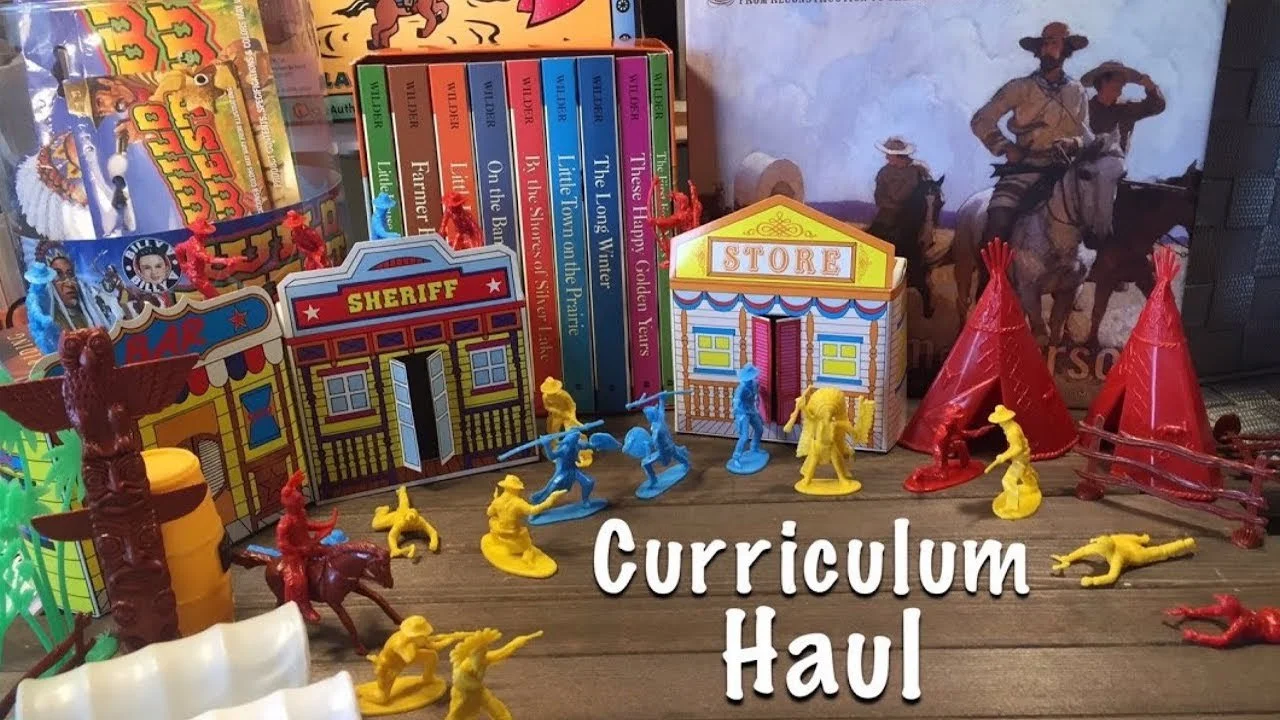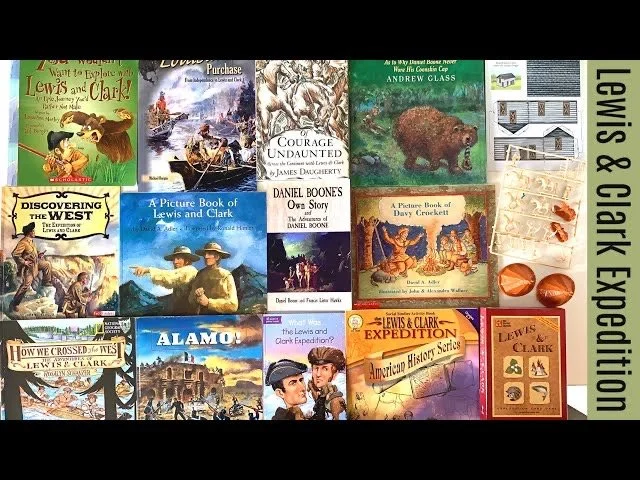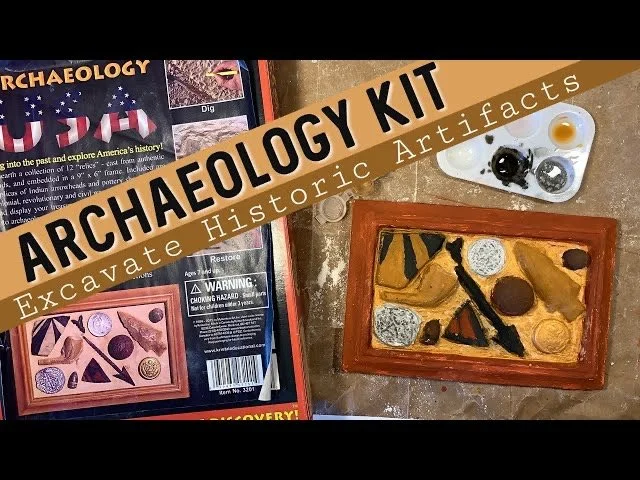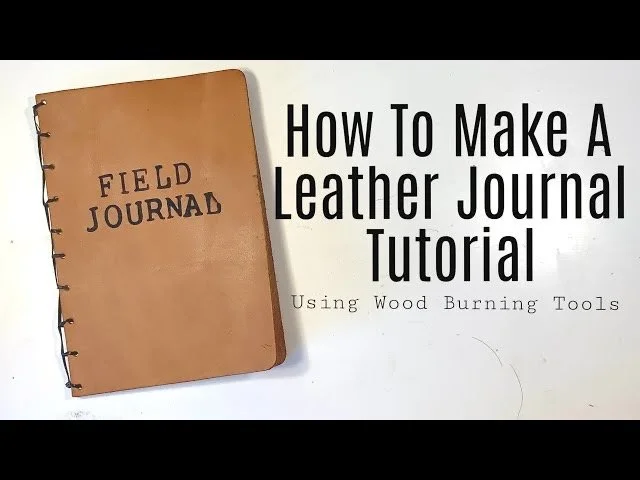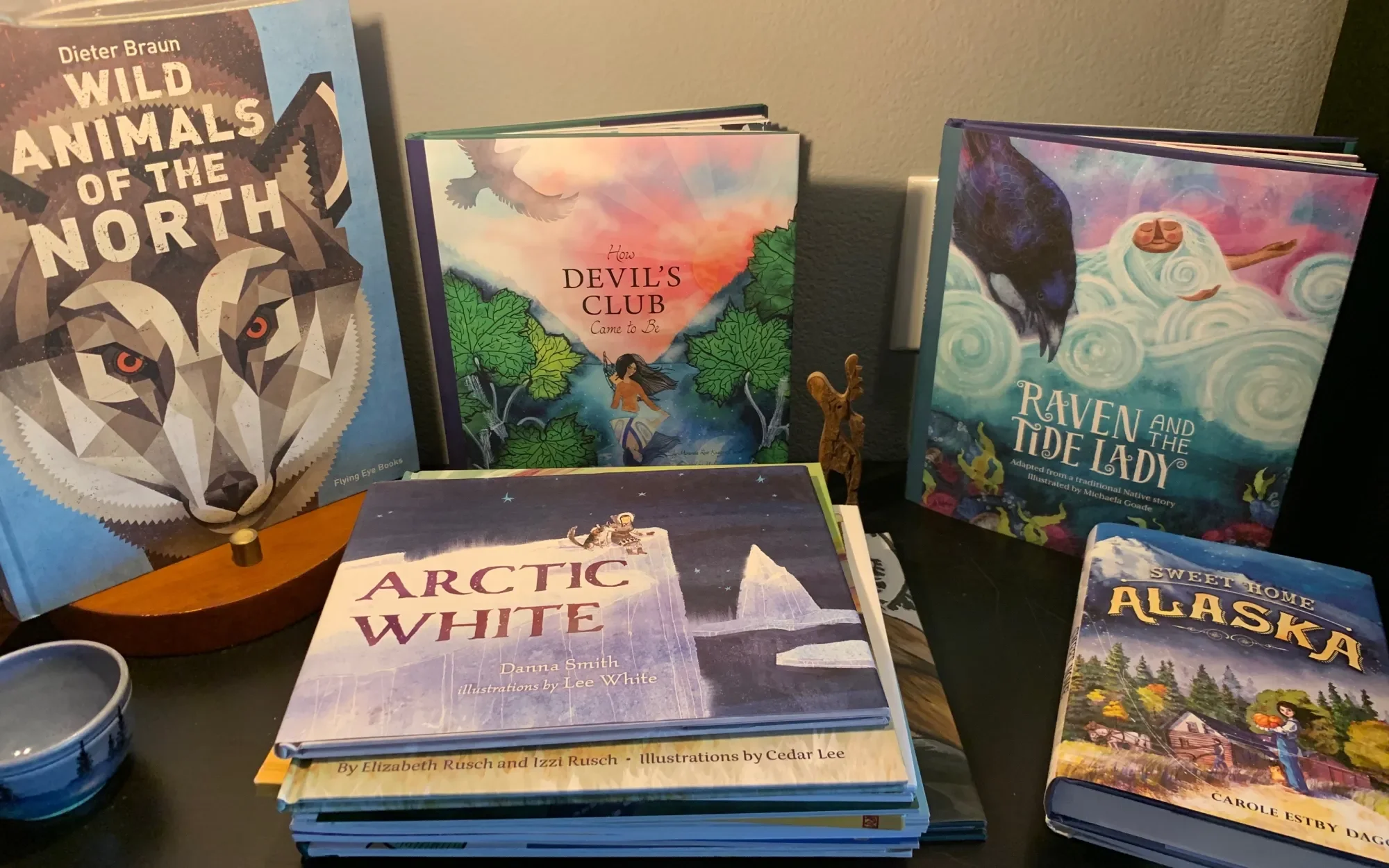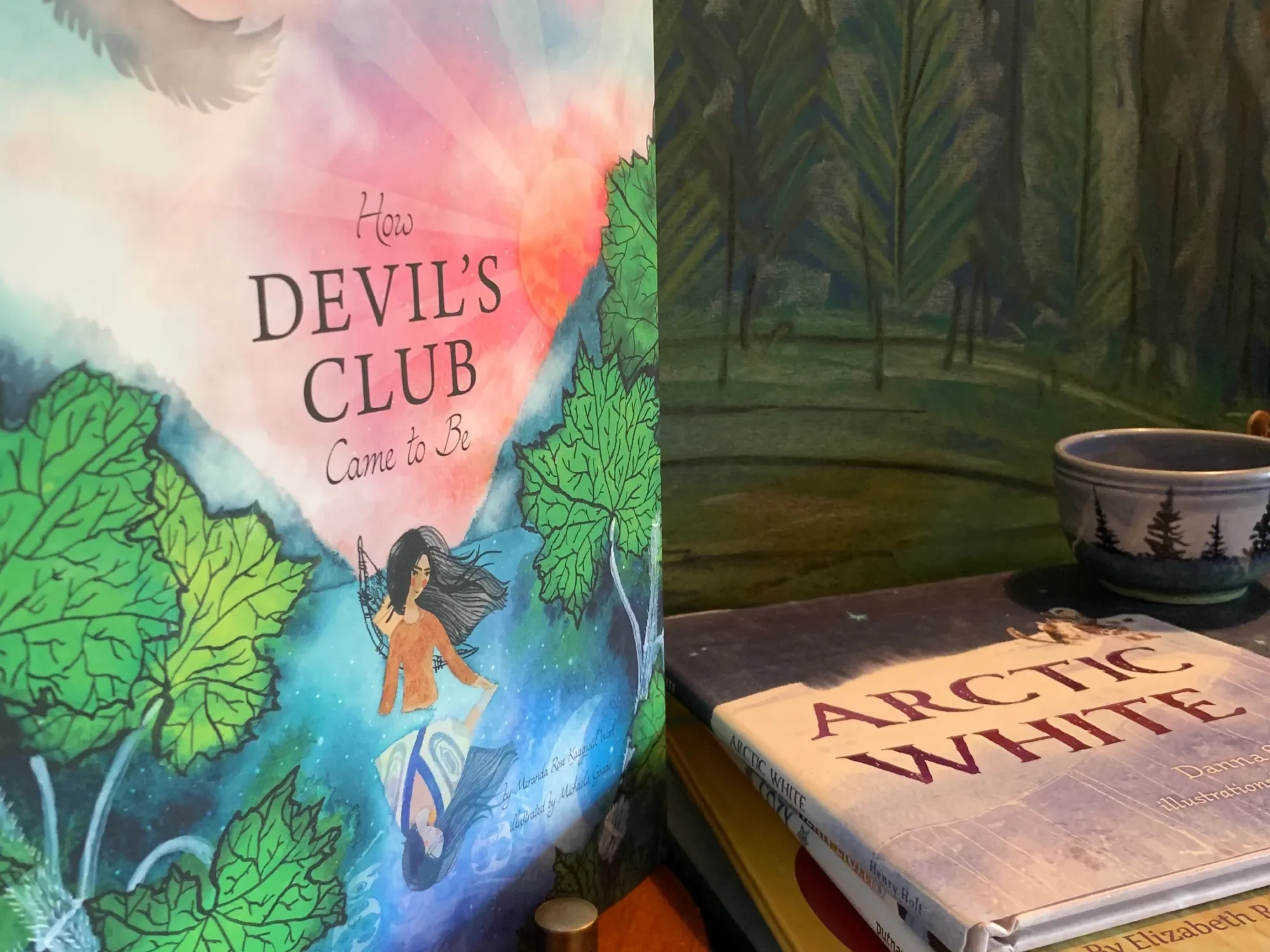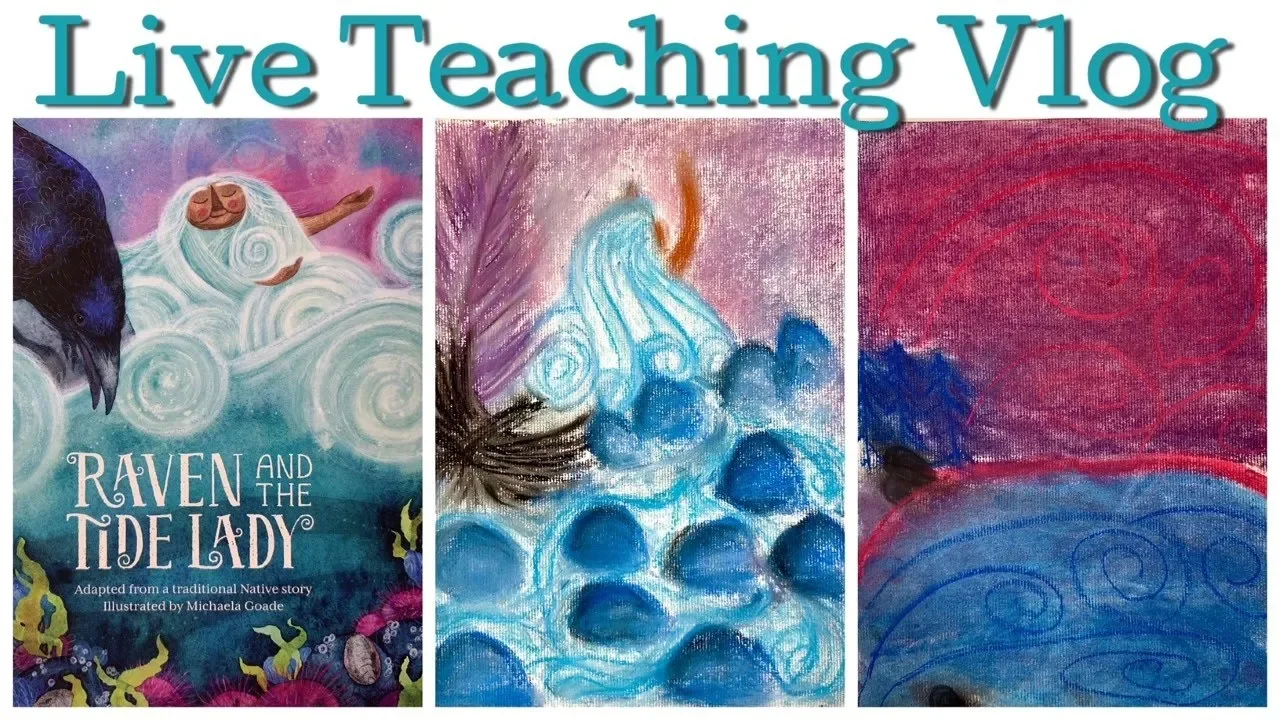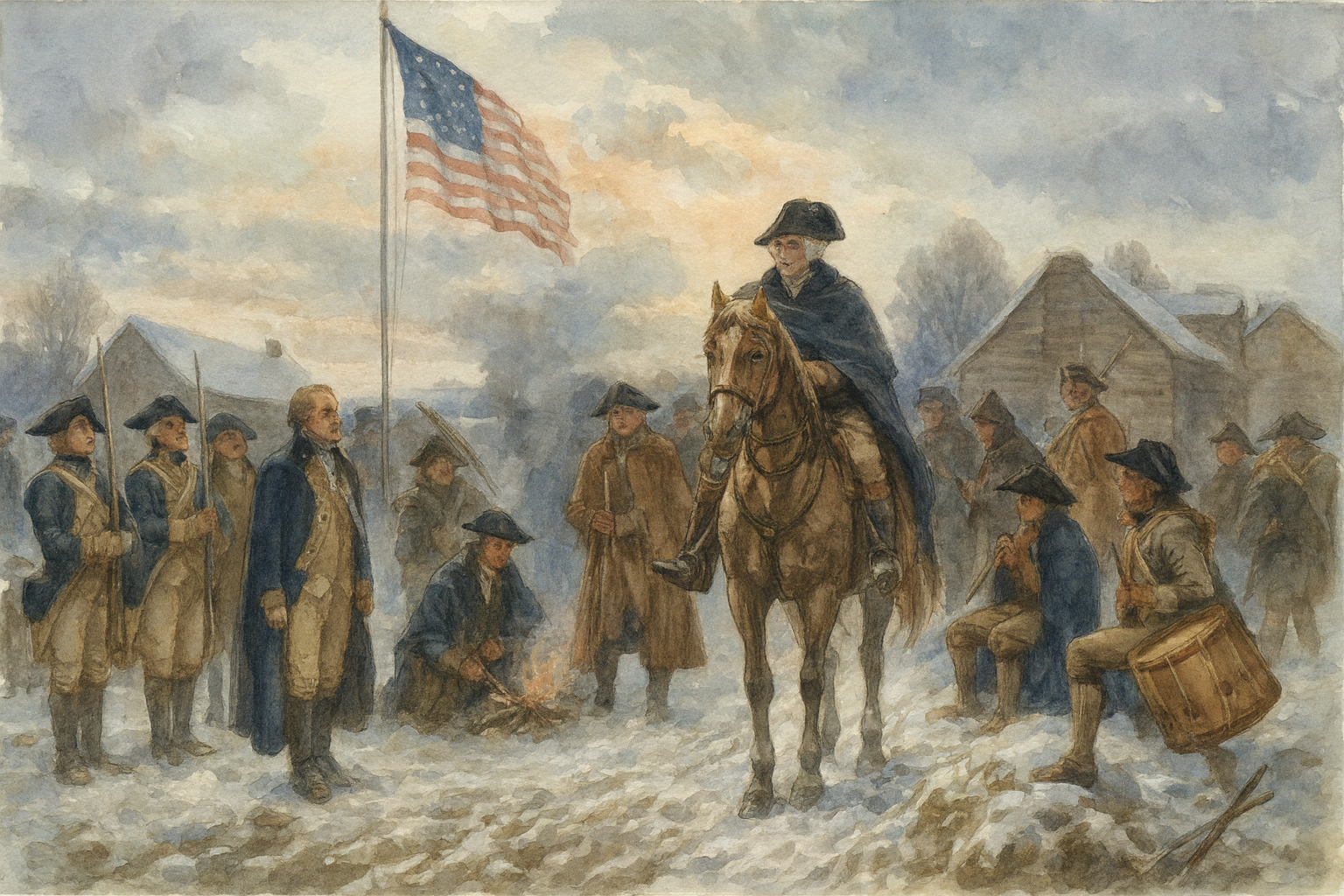
Colonial Times
Colonial Times
While our homeschool is Waldorf inspired, our Colonial Times Unit Study was set apart from the scope and sequence typically found in a Waldorf school. In the Waldorf curriculum, history is taught as a living story, but recorded history isn’t taught until Grade 6. Prior to this, the stories are those of legend, folktale, fairytale, myths and mythology.
By the time Waldorf students reach middle school, they are learning the history that shaped the modern world. In Grade 7, they learned about the Age of Exploration and Discovery. Students encountered the daring explorers, such as Columbus, Magellan, and Vasco da Gama. It is through those explorers and the discoveries that were made in North America that led to its colonization by Europe.
In Grade 7, students are wrapping up their European history with the Renaissance, the Reformation and the Revolutions. By Grade 8, the viewpoint shifts to that of North America and the struggles the colonizers encountered in establishing society and a government in the New World.
The Colonial Times along with the American Revolution and Civil War are covered in the US history block for Grade 8, while Western Expansion is taught in a local history block in Grade 5. However, I brought this unit to elementary school as a unit study rather than a Waldorf inspired main lesson block.
As a unit study, we used Living books as a basis of our curriculum. We read biographies, history books, and nonfiction books, and supported this unit with crafts, hands-on projects, and recipes.
The approach of a unit study varies extensively from that of a main lesson block. In general, when I do a unit study, I design it to serve the needs of multiple students, grades, ages and abilities. This means I include materials from picture books to novels to non-fiction.
The work each student produces reflects their development and personal abilities. While written and illustrated work is included and expected in each lesson, oral narration and hands-on projects are a great way to show learning for students who are too young to write extensively or who tire from too much writing.
Colonial Times
-
Resources & Chalk Drawings
We have done our Colonial Times Unit Study a few times so the resources are varied and spread over years. While some books and kits may no longer be available, links to most are provided so you may see the types of books I look for when putting together a unit study or main lesson block. I strive to add Living Books to our units to make the lessons lively, engaging and enjoyable.
-
Projects & Activities
The hands on projects for our Colonial Times Unit have been some of the most enjoyable and comforting projects ever in our homeschool. In part because these activities took place in the Autumn, which is a beloved time of year for us, but also my late sister and her son joined us for some of these activities and even hosted her own. Along with candle dipping and churning butter, we dipped apples and baked pumpkin pie. While some of these projects are historic, many were simply inspired.
-
Recipes
We love heading to the kitchen to add recipes to our lessons. We have to eat, so it seems like a win win to add historical meals when doing a history project. Sometimes the meals are regional or cultural rather than historic, but either way, it’s a delicious way to learn.
Colonial Times Resources
-
CURRICULUM HAUL | Colonial Times Books | HOMESCHOOL
We are kicking off our American History units with the Colonial times. We did an introduction to American History with a small unit on Columbus, but this is our first official unit of a series of units that will span several months.
-
How To Do A Unit Study Colonial Times
We officially kicked off our American History units with a unit on the Colonial Times. We have a mix of historical fiction, historical books, pictures books and activity books. We have a number of hands-on projects planned as well as a number of recipes to try.
-
Colonial America Unit Study
Unlike our typical history units, this Colonial America History Block was fairy short in comparison lasting 1-2 weeks. I gathered together resources we already had from the last time we did this unit a few years ago. We didn't purchase any new material for this unit, but there ended up being a couple additions we didn't have the first time. We also omitted a few resources for the sake of time, and even then, we didn't get through everything we had.
-
Chalk Drawing of the Mayflower
This is the second time in just three years that I'm drawing the Mayflower for our American History unit for the time period 1600-1750's. For this chalk drawing, I'm using Sargent Art square chalk pastels. I'm drawing on our mobile chalkboard which I've since mounted on the wall. It's by the company Ghent, and we have had it for years.
-
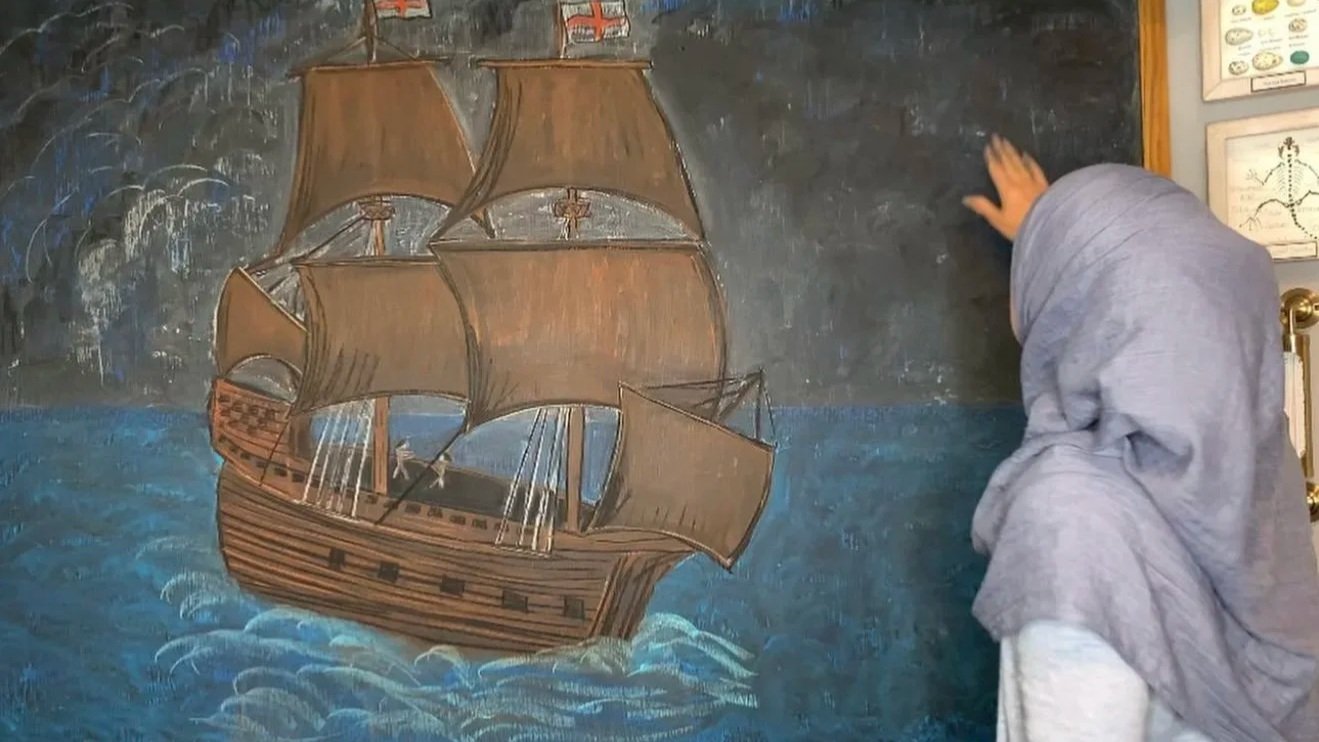
A New Unit
We’ve sailed into a new unit. As requested by my 13-year-old, we are doing a Colonial America unit. It’s shorter than the one we did before and with fewer projects, but it’s been a cozy way to start our school year. .
-

Chalk Drawing | The Mayflower
This is our first drawing after painting our slate chalk board with chalkboard paint. After many frustrating chalk drawings, I finally decided it couldn't be any worse. Well, I'm really pleased with the results and really pleased with our first chalk drawing of this unit.
-
Step by Step Chalk Drawing + STUDENT'S WORK
Today we are working on a chalk drawing inspired by the book "You Wouldn't Want To Be An American Colonist" by Jacqueline Morley and illustrated by David Antram and published by Scholastic. 'm using chalk pastels by Sargent Art on mounted chalkboards from Waldorf Supplies.
-
Colonial America Chalk Drawing
Today we are working on a chalk drawing inspired by the book "You Wouldn't Want To Be An American Colonist" by Jacqueline Morley and illustrated by David Antram and published by Scholastic. I'm using chalk pastels by Sargent Art on mounted chalk boards from Waldorf Supplies.
-
Colonial America Unit Study Review
This rounds out a short unit on American history time period 1600-1700's. For this unit, we used living books as our curriculum. We supplemented with projects and activities I made myself or that were inspired by the books we read.
-
Curriculum Review | Colonial Times
We completed our Colonial Times unit study from our American History unit. Some books were fantastic! Others were okay, but not worth owning. We did a number of activities inspired by three activity books, but if you had to just pick one, which would you choose?
Colonial Projects & Activities
-

Plant Dyed Wool
This has been on my crafting bucket list for ages: dying fabric & yarn with natural plant dyes. We finally did it! It was both easier & harder than I thought.
-
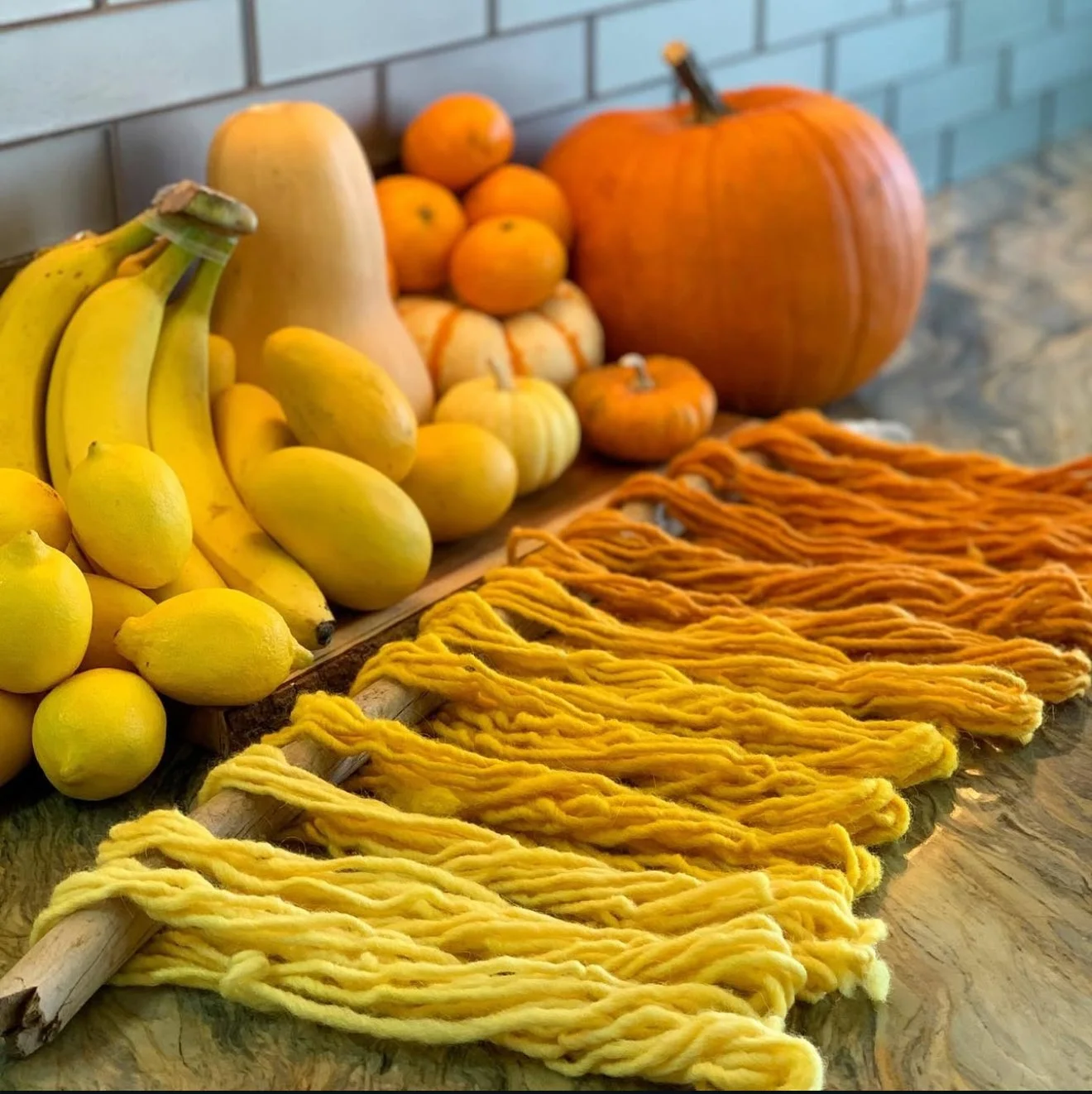
Hand Dyed Yarn
When your handwork project matches your fruits and vegetables, you swoon with joy. It’s not a failure, if you learn from your mistakes. It’s called an experience. And we’ve had a lot of experiences this past week.
-
How To Weave On A Loom
When doing a main lesson block, I look for a variety of books and projects for the children. For this unit, I set up our Harrisville Designs wooden loom for my 8-year-old daughter. Weaving is just right for a grade 3 student and it fit nicely with our American History unit that was primarily for my 12-year-old.
-

Colonial Times Projects
I need your help. I just released our Colonial Times Unit Study video on YouTube, and I’m questioning pretty much all our history resources for US History.
-

Spice Dyed Yarn
There’s something truly enchanting about seeing undyed yarn sink into a vat of natural dye and watching it change color. .
-

Plant Dyed Wool Yarn
The other day, a friend of mine asked how I learned to do all the things in my homeschool. I told her I didn’t know how to do them, I learned alongside my children. I wish I knew all these things because one thing I still struggle with is impatience and wasting time.
-
How to Make a Log Cabin
This super simple, frugal hands-on project can be accomplished by anyone, even if you are not crafty or do hands-on projects. It's easy, fast and you and your children will have a sense of accomplishment when finished. It's hard to mess up this project, so rest assured, you'll be pleased when it's complete.
-
Historic Mop Tutorial
While reading Great Colonial America Projects You Can Build Yourself by Kris Bordessa, we were inspired to do our own version of a Colonial Times mop. The supplies are readily available and affordable and this project took hardly any time at all and produced hardly any mess!
-
Historic Pine Needle Broom | Handmade
While working on our history units, we decided to make a child’s sized broom. We found inspiration for this project from Kris Bordessa’s book Great Colonial America Projects You Can Build Yourself. Though ours was more complicated than the book, it was actually really simple. You will need to assist your child if he wants to help, but this is a very quick project you can do in less than a half hour.
-
How to Make Marbled Paper
Here's another project we're doing for our American History Unit. We got the idea from the book American Kids in History Colonial Days by David King. The project was pretty exciting to do and would make for an lively science discussion on liquids that mix versus ones that don't.
-
Hand Dipped Candles
Did you ever wanted to turn left over candles into hand dipped tapers? You can either buy wax or upcycle an old candle. All you need is a deep pot for the wax, baker's twine, a pair of scissors and a burner. We used an old three-wick candle by Colonial Candles of Cape Cod sold by PartyLite. It has a nice light peppermint scent and a bright red color, both of which were retained when we turned them into new tapers.
-
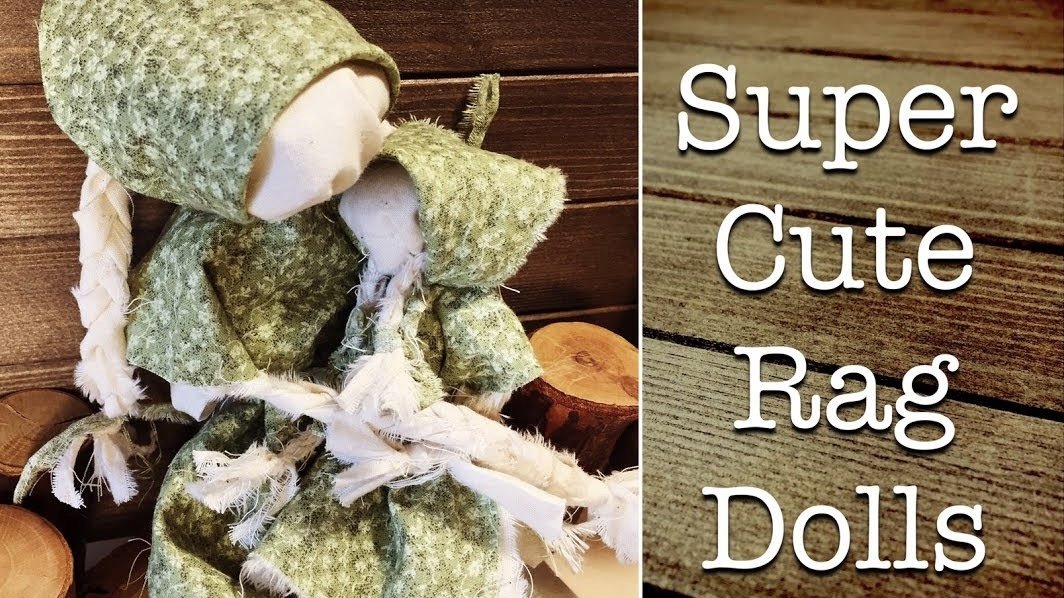
Easy Rag Doll Tutorial | Historic
Having had boys for 12 years of my motherhood journey, I never had the need to make these adorable rag dolls. My friend, Megan, taught our kindergarten co-op how to make them, and my five year old daughter loves them! In the tutorial you can see how simple, easy and fast they are to make. I'd like to make a few suggestions now that my daughter has been playing with them non-stop:
-

Boy Rag Doll Tutorial For Beginners
If you've never made playthings for your kids, this might be the perfect place to start. It's easy to make rag dolls, and what's great about it is that you don't need many supplies, and even old clothes would work perfectly for this project.
-
How to Make a Rope Bed | Historical
I love projects that are educational and functional. A few years ago, this doll’s bed from IKEA broke when my boys ‘accidentally’ stepped on the particle bed insert.
Colonial Recipes
-
How to Make Old Fashioned Apple Cider
These two apples just didn’t get eaten. Once they turn soft, no one likes them. But that’s okay. There are many things you can do with soft apples: make applesauce, apple pie or apple cider.
-
How to Make Old Fashioned Pumpkin Pie
It is timely that our unit study on the Colonial Times, the voyage of the Mayflower and the first Thanksgiving nestled perfectly with this time of year. Reservations about the actual events aside, this pumpkin pie was delicious, easy and ties in well with our unit study.
-
Apple Pie Tartlet Dessert
I had the best of intentions when I bought pound after pound of fresh gala apples at the start of apples season. I wanted to make all kinds of apple deliciousness. We did manage an apple pie and some caramel apples, but then our apples rested at the bottom of the crisper for literally months....
-
Tortilla Soup Recipe
Tortilla soup is a family fall and winter favorite because it's so warming, hearty and delicious. It's also super fast! Not only can you make the soup in about 30 minutes, while it's simmering, you can garnish the soup with cilantro, avocado, pepper jack cheese and fresh homemade tortilla chips.
-
Vegetable soup in a Pumpkin
This is a show stopping centerpiece that tastes great and looks amazing! Add drama and intrigue to your dinner party with this perfect-for-fall vegetable soup served in a pumpkin. It's actually easier than you'd think to make, is the perfect meal or appetizer for large groups and warms you to the bone on cold autumn nights.
-
How to Bake Bread
Baking bread is a quintessential kindergarten experience in a Waldorf school. We take this tradition and bring it home. In this video, I'll show you a quick and easy recipe for making bread.
-
How to Make Candied Orange Peels
We are making our way through our Colonial Times unit study and finding a lot of inspiration from a few activity books we have. Today we are using a recipe from Colonial Kids: An Activity Guide To Life In The New World by Laurie Carlson.
-

How to Make Old Fashioned Homemade Butter
There's nothing quite like fresh butter and there's no better satisfaction than being able to make it from scratch. And when children are able to do this, the thrill of making something like butter, turning a thick liquid into a solid and a thinner liquid is pretty amazing.
-
Roasted Pumpkin Seeds | EASY Recipe
Did you carve a pumpkin this fall? I hope you saved those pumpkin seeds because you can roast them with a bit of salt and olive oil for a fast, tasty and healthy snack. Don't forget to reverse a few seeds to plant them next spring/summer and hopefully you'll have your very own pumpkin next fall!
-

Colonial Feast
Let me tell you about all the ways our colonial feast went wrong. If for nothing else to share how sometimes the best laid plans get derailed. Firstly, my mom has to cancel last minute because of an electrical issue at her home which required her to be present the entire time the electrician was there. This sent my 8-year-old daughter into such a melancholic mood she was disinterested in all I had planned going so far as calling the decorations that adorned the table “silly”. .
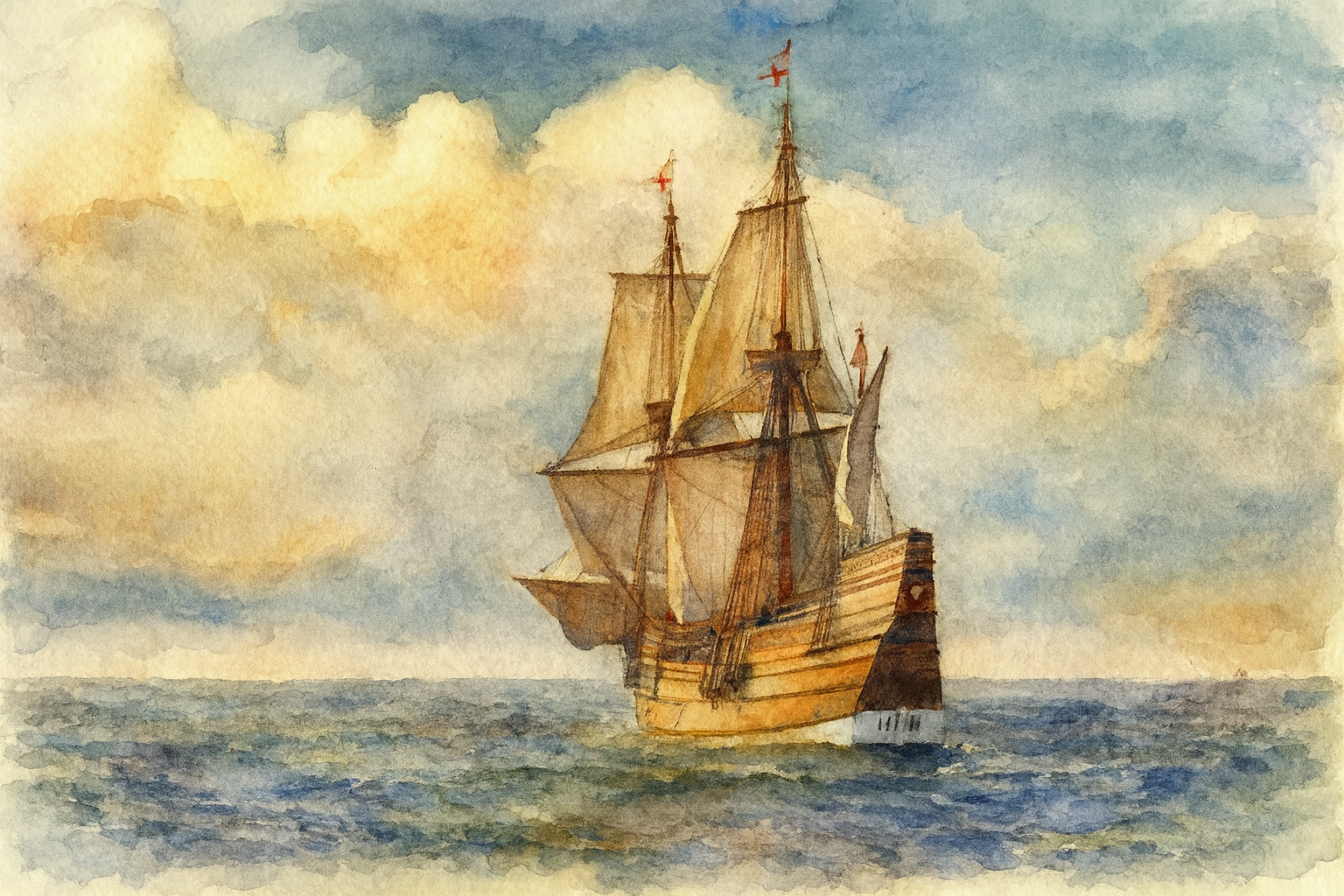
Colonial Times
CURRICULUM HAUL | Colonial Times Books | HOMESCHOOL
Fall of 2016
We are kicking off our American History units with the Colonial times. We did an introduction to American History with a small unit on Columbus, but this is our first official unit of a series of units that will span several months.
Now that all our materials have arrived, I can work on separating them into smaller units. Once they are all sorted ( we got a lot of material!!), I can begin lesson planning.
The first step in lesson planning for me is figuring out how long each book, project or kit is going to take to complete. I use full back sticky Post-Its to help me in this part of the process. I adhere a Post-It on the back of the book or kit and I write whatever information can help in the lesson planning process. For instance, I write long long the book will take to complete and how many chapters I have to read each day to complete the book. If we aren’t going to read a book cover to cover, I write what pages or sections we’ll cover. If my children are going to read the book, I mark who will read it and how long it will take to complete. If it’s a project book, I mark the projects we plan to do with Post-It flags, as well as mark what supplies I’ll need to find or buy for the projects. I keep all these materials, books, etc. in a bin. Right now they are stored in our school room’s closet, but we are fast running our of space. I’ve used some additional storage right outside our school room, and again this year, I’ll need to shuffle some things so I can keep these new units accessible throughout the year. I especially like open bins for storing our unit studies.
Once the general lesson planning is completed, I can more onto the detailed day to day lesson plans and figure out how long I want to spend on a unit. I usually make up our weekly lesson plans on Sunday. I sometimes plan a whole unit (6 weeks or so) at a time and that’s very helpful, too.
See the complete list of American History Haul videos. You can get the complete list of materials we are using for all our American History Units by click here or visiting my Teachers Pay Teachers page.
Here’s a complete list of the resources we used for our Colonial Times Unit Study:
Great Colonial America Projects You Can Build Yourself by Kris Bordessa
Information and activities for all of elementary
Grade Level 2nd grade and up
Reading Level: 6th grade and up
Don’t Know Much About: The Pilgrims by Kenneth C. Davis
Witty illustrations with captions. Written in question and answer form
Grade level: 2nd and up
Reading level: 5th grade and up
If You Lived in Williamsburg in Colonial Times by Barbara Brenner
Written in a question and Answer form
Grade level: 1st and up
Reading level: 5th and up
You Wouldn’t Want to Be an American Colonialist by Jaqueline Moley
Witty narrative with whimsical illustrations
Grade level: 1st grade and up
Reading level: 5th grade and up
Seven chapters, informative
Grade level: 4th grade and up
Reading level: 6th grade and up
The World of Capt. John Smith by Genevieve Foster
First published in the 1800’s
Grade level: 4th and up
Reading level: 7th and up
Squanto: Friend of the Pilgrims by Clyde Robert Bulla
Easy engaging read
Grade level: 2nd and up
Reading level 4th and up
Historical Fiction:
Colonial Times:
American Dream: The New World, Colonial Times, and Hints at the Revolution by
1620-1765- Sisters in Time – Follow four girls through history
Grade level: 2nd and up
Reading level: 4th and up
Activity Books/Supplements:
Colonial Times:
Colonial Kids: An activity guide to life in the new world by Laurie Carlson
Activities and projects for elementary aged kids
Grade level: 1st and up
Narrative activity book with projects to do inspired by life in colonial America
Grade Level: Elementary
Great Colonial Projects You Can Build Yourself by Kris Bordessa
Projects and activities
Grade level: elementary
*Drawing America’s California Sights and Symbols by Jennifer Quasha
Drawing book
Grades 2nd and up
Games and Pretend Play:
Colonial Times:
Colonial America Historical Replica Coins
1616-1688( 6 coins)
American Revolution:
American Revolutionary Coins- Replica Coins
1776- 5 coins
Professor Noggin’s Revolutionary War Card Game
Grade level: 3rd and up
Trivia board game
Grades 6th and up
Audio CDs:
Colonial Times:
Audio CD with songs from colonial times
Grade level: all
*Heroes of America CD by Amanda Bennett
Audio CD From 1492-1865
Grade level: all
How To Do A Unit Study Colonial Times
We officially kicked off our American History units with a unit on the Colonial Times. We have a mix of historical fiction, historical books, pictures books and activity books. We have a number of hands-on projects planned as well as a number of recipes to try.
It may seem more like a cooking unit because we had a number of recipes we added to the unit: Vegetable soup in a pumpkin, pumpkin pie, pumpkin seeds, apple pie and popcorn to name a few.
Our hands-on project will span multiple units like knitting, weaving, sewing and crocheting, but we’ll be making a broom and mop (child sized) as part of this unit. Building a model of the Mayflower would have been so neat! But you can see the Mayflower 2 on the east coast and get a good look around.
Here’s my sophisticated lesson plan. I can tell you now that this unit takes three weeks (not the two I proposed). I also forgot to mention a book we are using for this unit: The World of Capt. John Smith. Which is a fantastic book so far! Amazingly written in a captivating narrative. You almost feel as though your right there.
Simple To-Do List Lesson Plan
Colonial America Unit Study
Unlike our typical history units, this Colonial America History Block was fairy short in comparison lasting 1-2 weeks. I gathered together resources we already had from the last time we did this unit a few years ago. We didn’t purchase any new material for this unit, but there ended up being a couple additions we didn’t have the first time. We also omitted a few resources for the sake of time, and even then, we didn’t get through everything we had.
One book we ended up not doing at all this time around was The World of Captain John Smith. I thought this would be the perfect book for my 13-year-old son as assigned reading as I liked it so much the first time around. But alas, he didn’t get into it as much as I hoped and instead he read the Life and Times of Myles Standish.
For our lesson plans, I basically wrote a list of the materials I hoped we’d get through. I didn’t schedule time or days for this, but did restrict the length of the unit to just one week and in reality it took almost two weeks. We worked daily on the our main lesson block reading and doing projects for about 2 hours each day on average.
Our main project for this unit was the weaving project that both my 8-year-old daughter and 13-year-old completed, though it took them until the end of all the history units to finish it. Following this unit, we did a unit on the Lewis and Clark Expedition and the American Revolutionary War. Fall 2019
Chalk Drawing of the Mayflower
Fall of 2019 Chalk Drawing
This is the second time in just three years that I’m drawing the Mayflower for our American History unit for the time period 1600-1750’s. For this chalk drawing, I’m using Sargent Art square chalk pastels. I’m drawing on our mobile chalkboard which I’ve since mounted on the wall. It’s by the company Ghent, and we have had it for years. So many years in fact that over time, my chalk pastels stopped working well on this chalkboard. Over time, the slate becomes smooth and nothing stuck except white chalk. Finally one year, I painted over it with chalkboard paint. It improved it but also left other challenges. I had used a brush, so you could see and feel brush strokes. I wish I had used a spray. My chalkboard is 4’x6′ and I’ve mounted it on the wall over two 1×5 Ikea Kallax bookcases which house many of our books. Chalk drawing inspiration came from the book Miles Standish by Cheryl Harness.
A New Unit Study
We’ve sailed into a new unit. As requested by my 13-year-old, we are doing a Colonial America unit. It’s shorter than the one we did before and with fewer projects, but it’s been a cozy way to start our school year.
Because we’ve done this unit before, you can see all the projects we’ve done and books we’ve used on my website and YouTube channel. It’s all in one blog post and playlist.
All new projects and tutorials will be added to the blog post and playlist so you can easily find them and use them in your homeschool.
We didn’t want to repeat too many projects so we focused on a few old favorites: candle dipping and weaving (though we took this project up a notch) and added a few new ones: dying fabric and yarn with natural materials and a colonial feast.
I debated making a new chalk drawing, but as I was talking to myself (debating aloud), I heard my 13-year-old son get excited at the prospect of a new drawing, so I sifted through our colonial America books and settled on a variation of the one I did last time: The Mayflower.
It’s never easy doing a chalk drawing of this scale. My chalk board is 4 feet by 6 feet and no matter what, it’s never going to take less than an hour.
Plus there’s the equivalent of writer’s block (artist’s block?) each time I prepare to erase and draw something new.
It’s an agonizing process and I do it for one sole purpose: for the look on my children’s faces when they see the new drawing. They literally light up. And for that, I’ll do it again and again
Chalk Drawing | The Mayflower
This is our first chalk drawing after painting our slate chalk board with chalkboard paint. After many frustrating chalk drawings, I finally decided it couldn’t be any worse. Well, I’m really pleased with the results and really pleased with our first chalk drawing of this unit.
This drawing was made using Sargent Art Chalk Pastels. It took one hour to complete and I used the book The Adventurous Life of Myles Standish by Cheryl Harness as inspiration.
You can see all our videos for our Colonial Times unit study.
Step by Step Chalk Drawing + STUDENT'S WORK
Today we are working on a chalk drawing inspired by the book “You Wouldn’t Want To Be An American Colonist” by Jacqueline Morley and illustrated by David Antram and published by Scholastic.
I’m using chalk pastels by Sargent Art on mounted chalk boards from Waldorf Supplies. You can see all our videos for our Colonial Times unit study.
My 5th grader’s work:
Colonial America Chalk Drawing
Today we are working on a chalk drawing inspired by the book “You Wouldn’t Want To Be An American Colonist” by Jacqueline Morley and illustrated by David Antram and published by Scholastic.
I’m using chalk pastels by Sargent Art on mounted chalk boards from Waldorf Supplies. You can see all our videos for our Colonial Times unit study.
My 10 year old son worked on his drawing as I worked on mine. I gave him tips along the and a few times we both had to redraw the fence so it wasn’t too high or to thick. Since this was when the drawing was still being sketched, it was easy to change.
Colonial America Unit Study Review
This rounds out a short unit on American history time period 1600-1700’s. For this unit, we used living books as our curriculum. We supplemented with projects and activities I made myself or that were inspired by the books we read. For the unit, I wrote out what I wanted us to cover in a list form. I limited time rather than content. We did this unit for about 2 weeks and covered what we could in that time. While I thought our feast was well planned and delicious, we did run into some unforeseen problems. My daughter was upset and my son was not interested. My nephew joined us and he seemed to have a good time. I wrote about it in an Instagram post that you can read on in the blog post that accompanies this video. The new projects for this unit include a lot of handwork. We did two weaving projects and two knitting projects. Both children did weaving on a loom. My daughter’s was a Harrisville Design loom and for my son we made a DIY loom. We ran into some problems with that loom, but in the end he has a nice sized bag. We also knit hats and socks! Tutorial videos will be included in this playlist as well as in a handwork playlist.
Curriculum Review | Colonial Times
We completed our Colonial Times unit study from our American History unit. Some books were fantastic! Others were okay, but not worth owning. We did a number of activities inspired by three activity books, but if you had to just pick one, which would you choose?
I’ll share my pick and thoughts on why I chose it. We included some games in our unit as well as an audio CD. The instrumental music of the colonial times was the best!! I loved it as did the children. We played it every morning and often listened to the whole CD 2-3 times throughout the day.
We started these cooler often cloudy or misty mornings with a candle and the soft colonial times music playing in the background. Often we kept the blinds in the school room only angled open but not raised so the room was darker than usual (more than adequate for doing school work), and turned on our accent lighting but kept the harsh bright overhead track lighting off.
We kept other superfluous busy work to a minimum. I only assigned a one worksheet each in math and grammar (review work) and one worksheet daily in fractions for my 5th grader. We held off on spelling practice, mental math, poetry and the seerah (religious studies. My 5th grader often started the day with his worksheets and playtime with his sister who is five years old. later in the morning we would begin reading, but often we wouldn’t start reading until afternoon or evening. We would either sit around the fireplace and read or sit on the couches with hot chocolate and read. For this unit I did three big chalk drawings and my son copied them into his main lesson book.
I also did two smaller chalk drawings of which I don’t have videos for. Two entries in his main lesson books were copied from books we read. I penciled an outline and he drew it in and colored it. We alternated between oral and written narrations. Actually we did more oral narrations. My 5th grader read a number of historical fiction on his own. I had intended to turn at least one of those reading assignments into a book report but didn’t. Maybe I still will or maybe I’ll save it for the next unit. Having disliked book reports in school, I have an aversion to assigning them. I think a far better method is simply asking the student about the book and asking who the author is in an organic natural manner. I don’t want to kill the spirit of reading by assigning reports. He’ll likely quit reading so many books for school or cut down on the number. Right now he reads them like they’re for pleasure, and he’s learning so much. For this unit, we did a number of hands-on projects and activities.
Since this unit overlapped with fall and Thanksgiving, it was seasonally appropriate to be making pumpkin pie, apple desserts, and spiced apple cider. We churned our own butter using an antique butter churn as well as made it in a jar we shook vigorously. We also made popcorn, vegetable soup in a pumpkin and candied orange peels. We also made a child-sized broom and mop. We marbled paper, made a quill and spun yarn. I loved it all and my children were equally amused and educated in the process.
You can see the complete playlist for our Colonial Times unit study, and see all the materials we used the chalk drawings we made and projects we did.
See the complete list of materials we used for our history units by checking out my free download at Teachers Pay Teachers.
Colonial Projects & Activities
Colonial Recipes
American Revolution
It’s time for a new unit! This one is for the American Revolution time period. Though we completed our Colonial Times unit study, there are two books that will trail into this unit. Some audio books/songs we had scheduled for this unit, just don’t want to make an appearance! We’re still really enjoying the audio CD Spirited Sounds of Colonial Times.
American Revolution | Resources & Projects
Lewis & Clark
& the Western Movement
When I started planning our American History units, I quickly found myself overwhelmed by the sheer volume of materials available. Everything looked to inviting and inspiring and I did something I do often, I overbought and over planned. Then I had to read our way out of the massive pile of books I had purchased! We did…slowly and over years.
Lewis & Clark and The Western Movement
Alaska
While most of our units include far more diversity in the types of books and topics we cover, this unit is simply a collection of books that we plan to read. There are many projects and hands on activities you could do with a winter unit or Alaska unit, but we are currently keeping it simple with just read alouds I’ll read to my 9-year-old daughter and my 14-year-old son. One project you could do is some handwork. Handwork and knitting especially lend themselves well to winter units and wintertime in general.
Alaska Unit Study
US History



